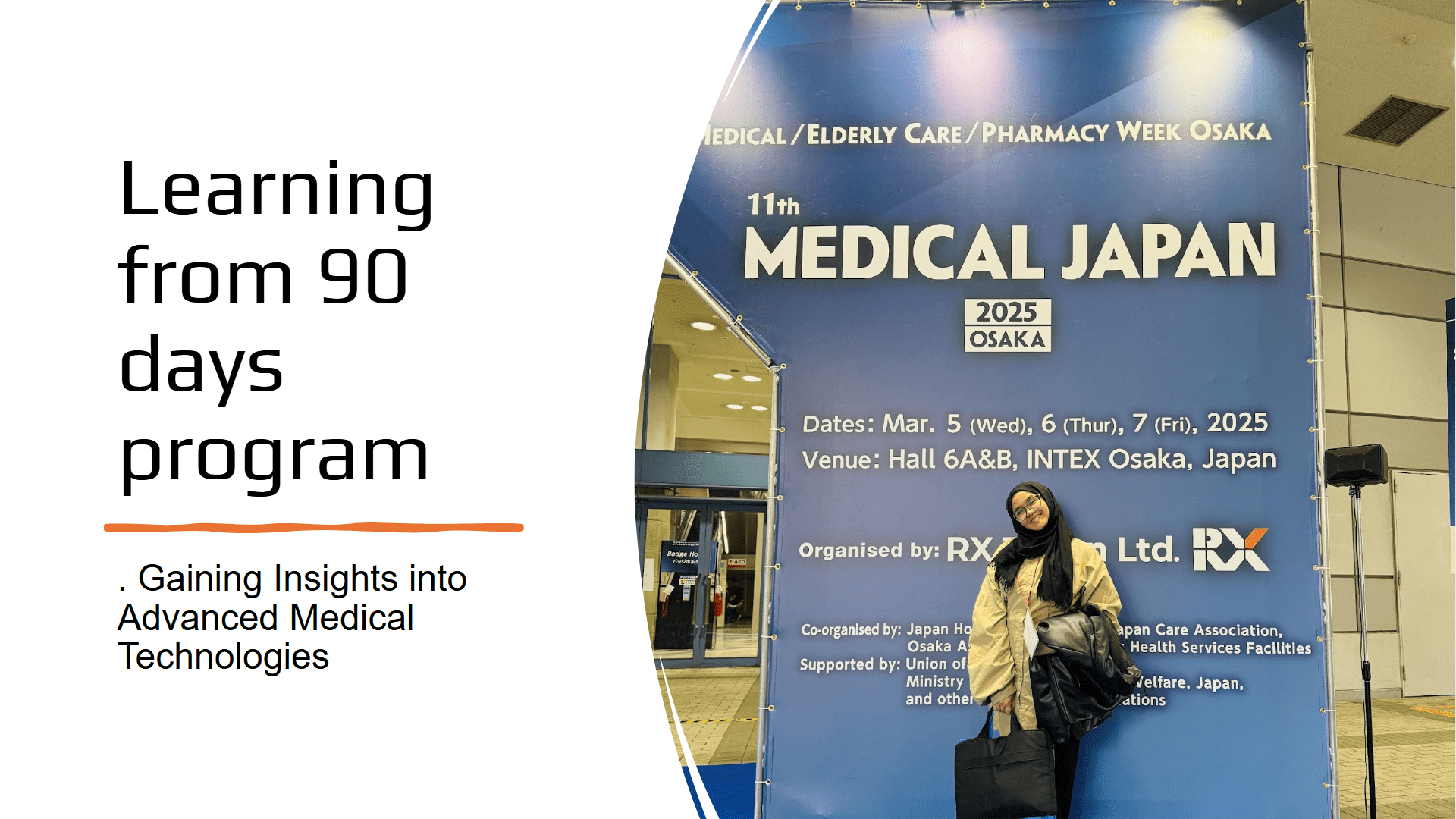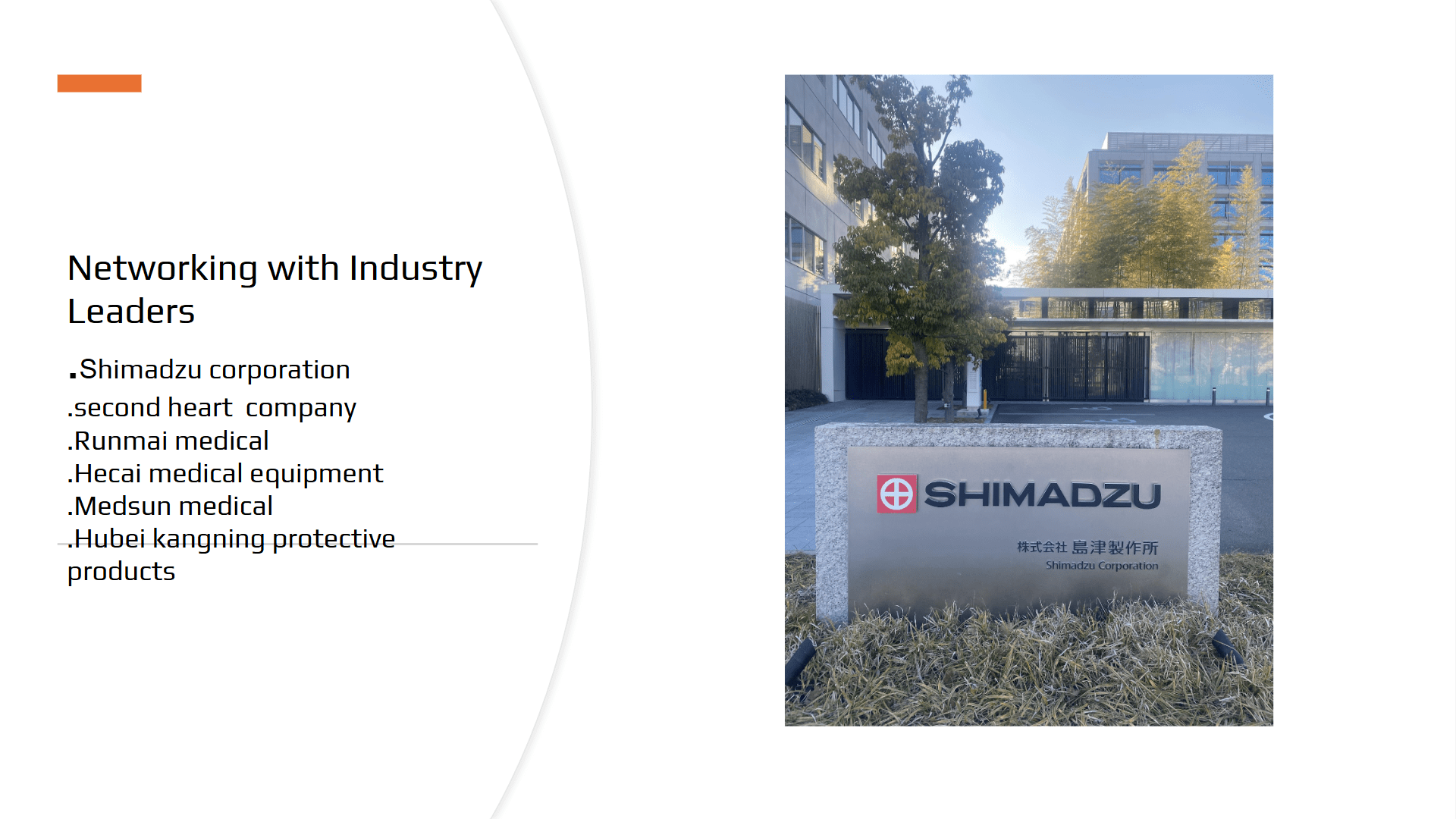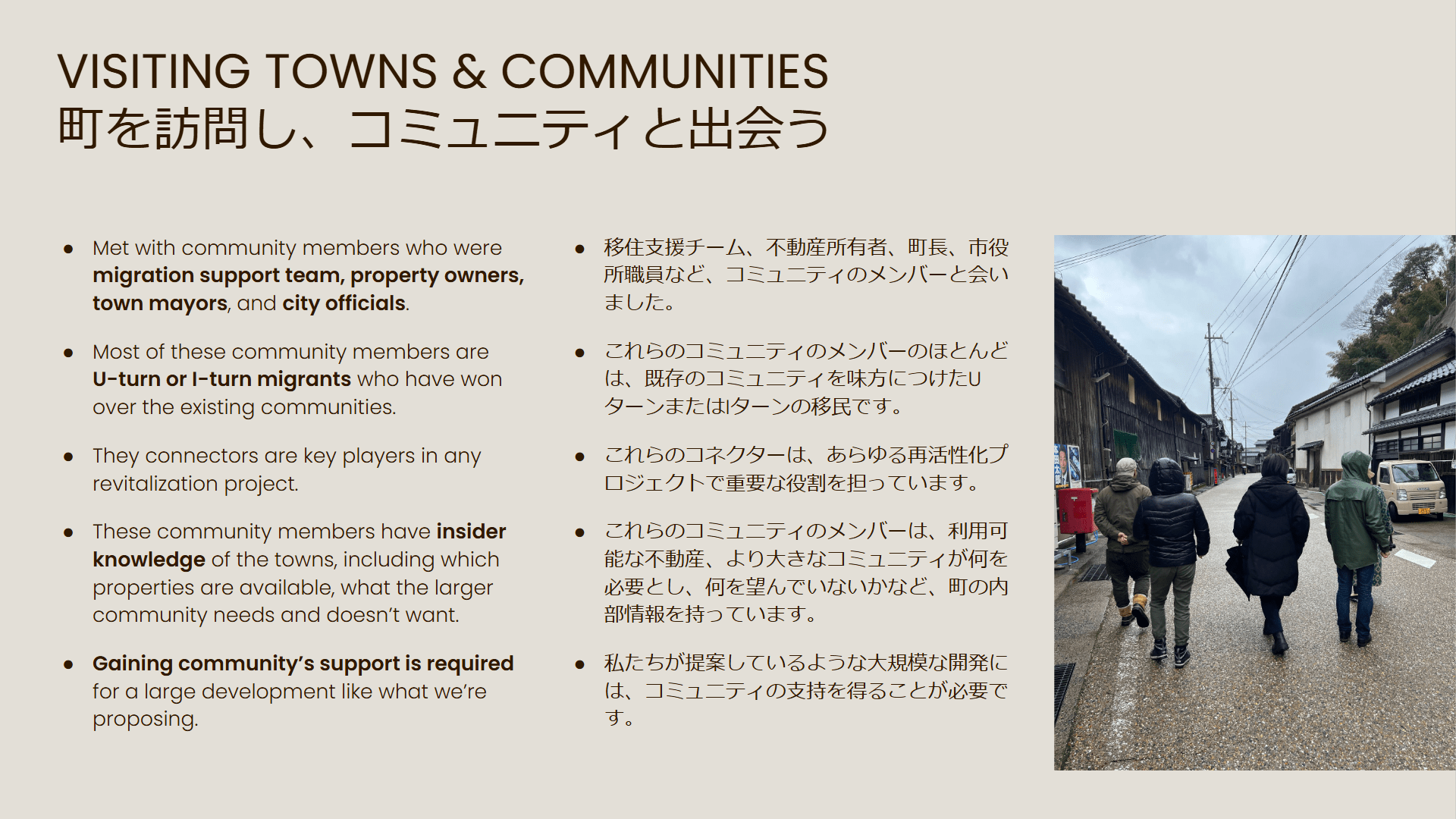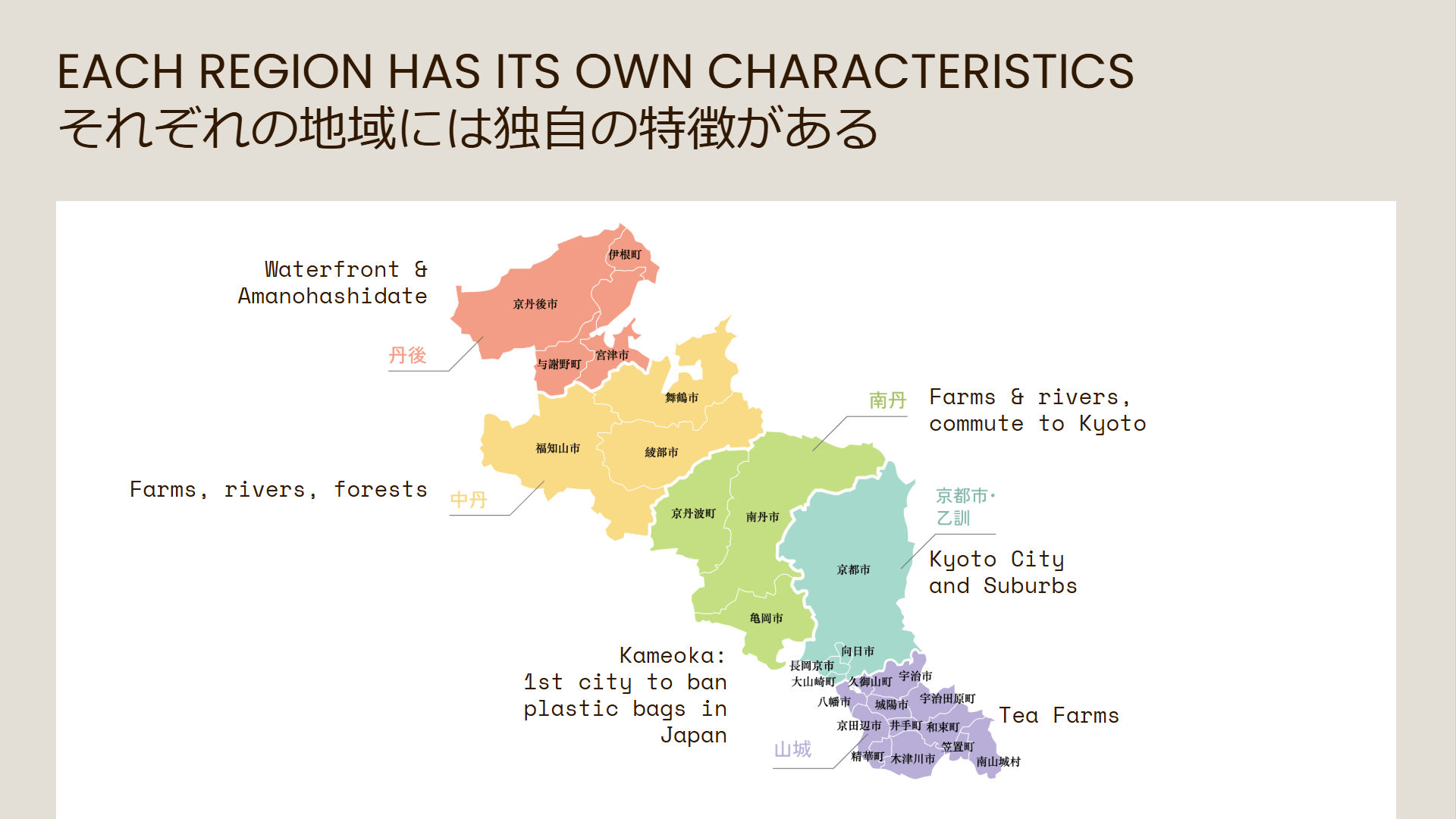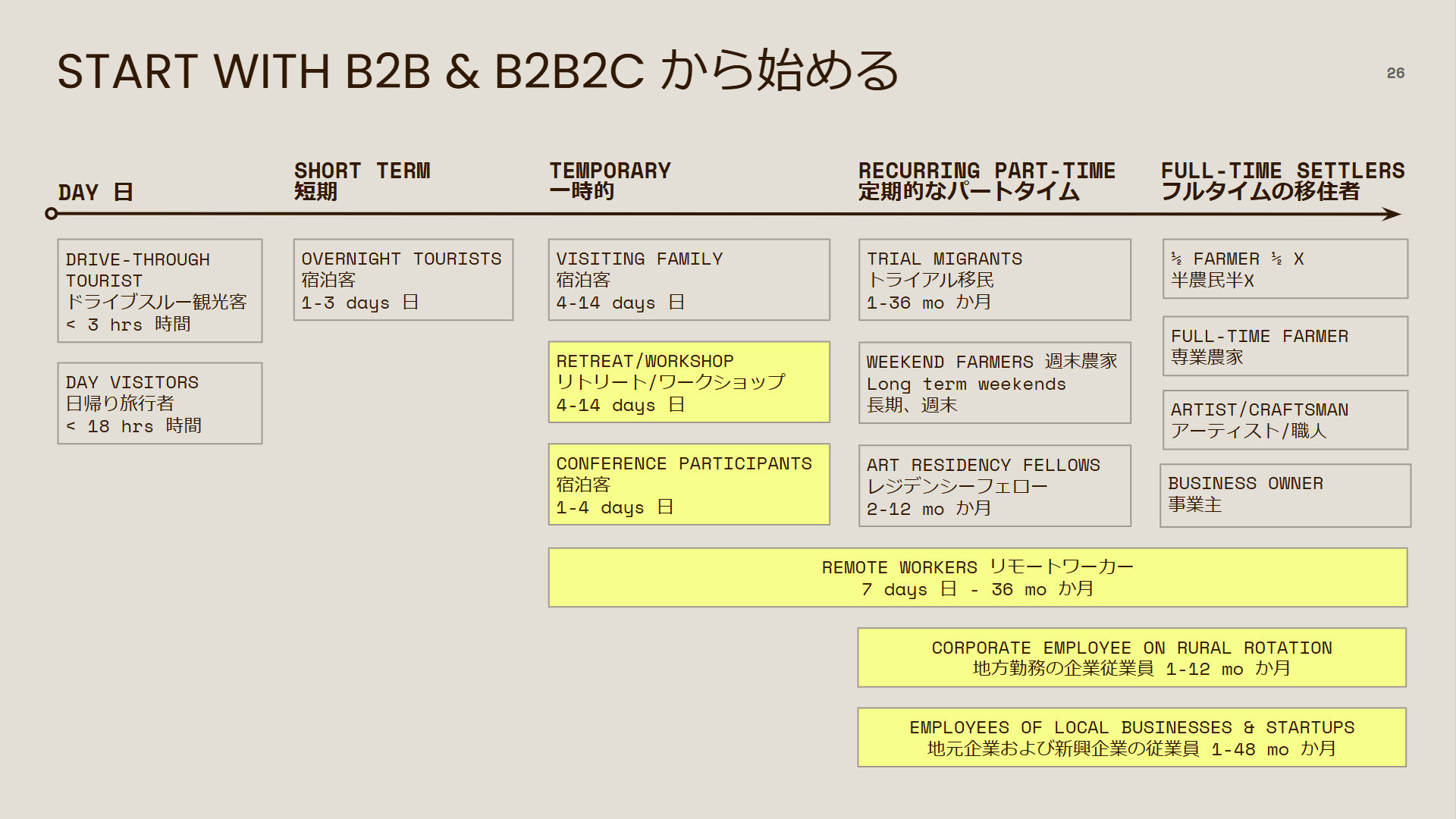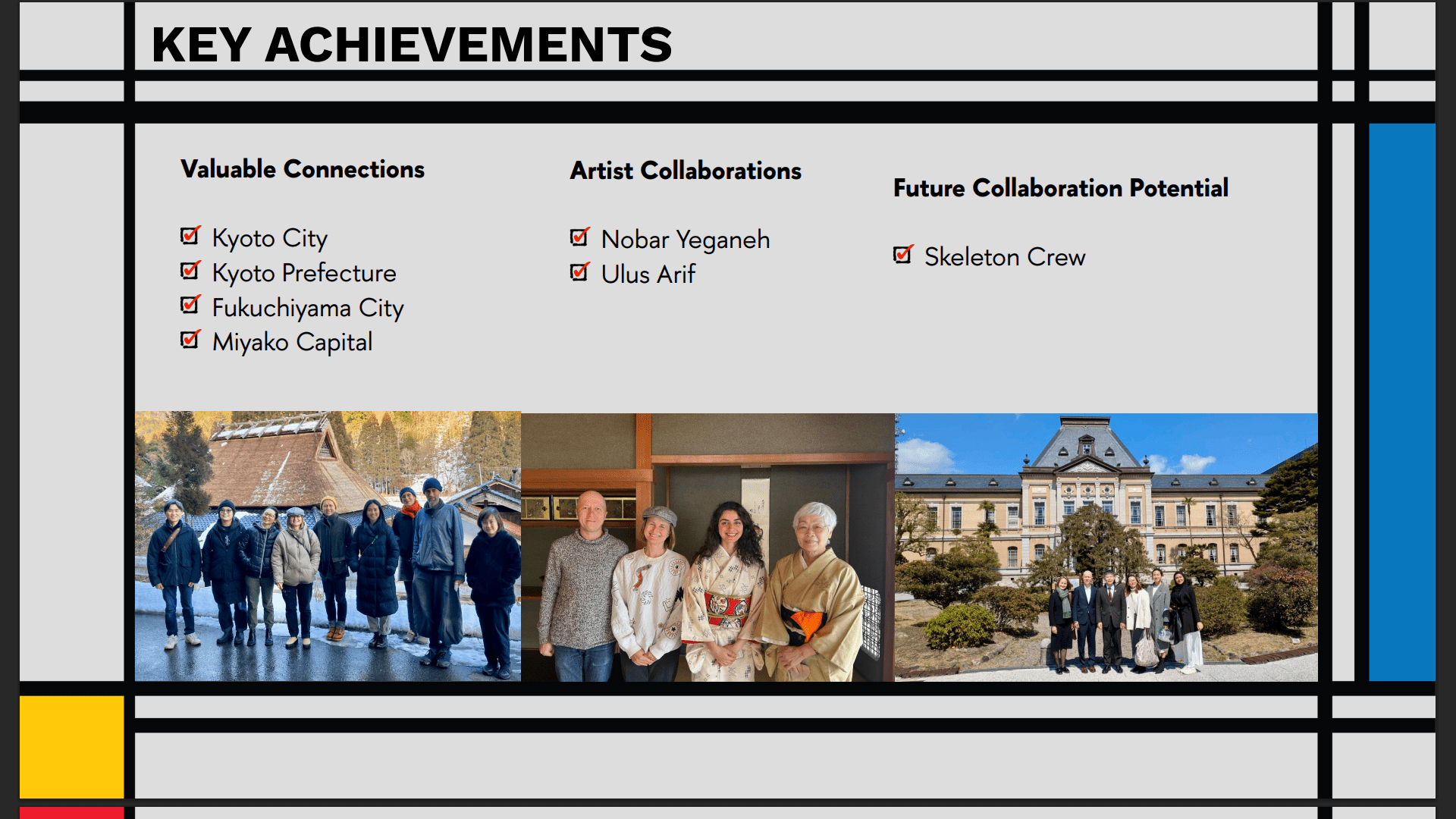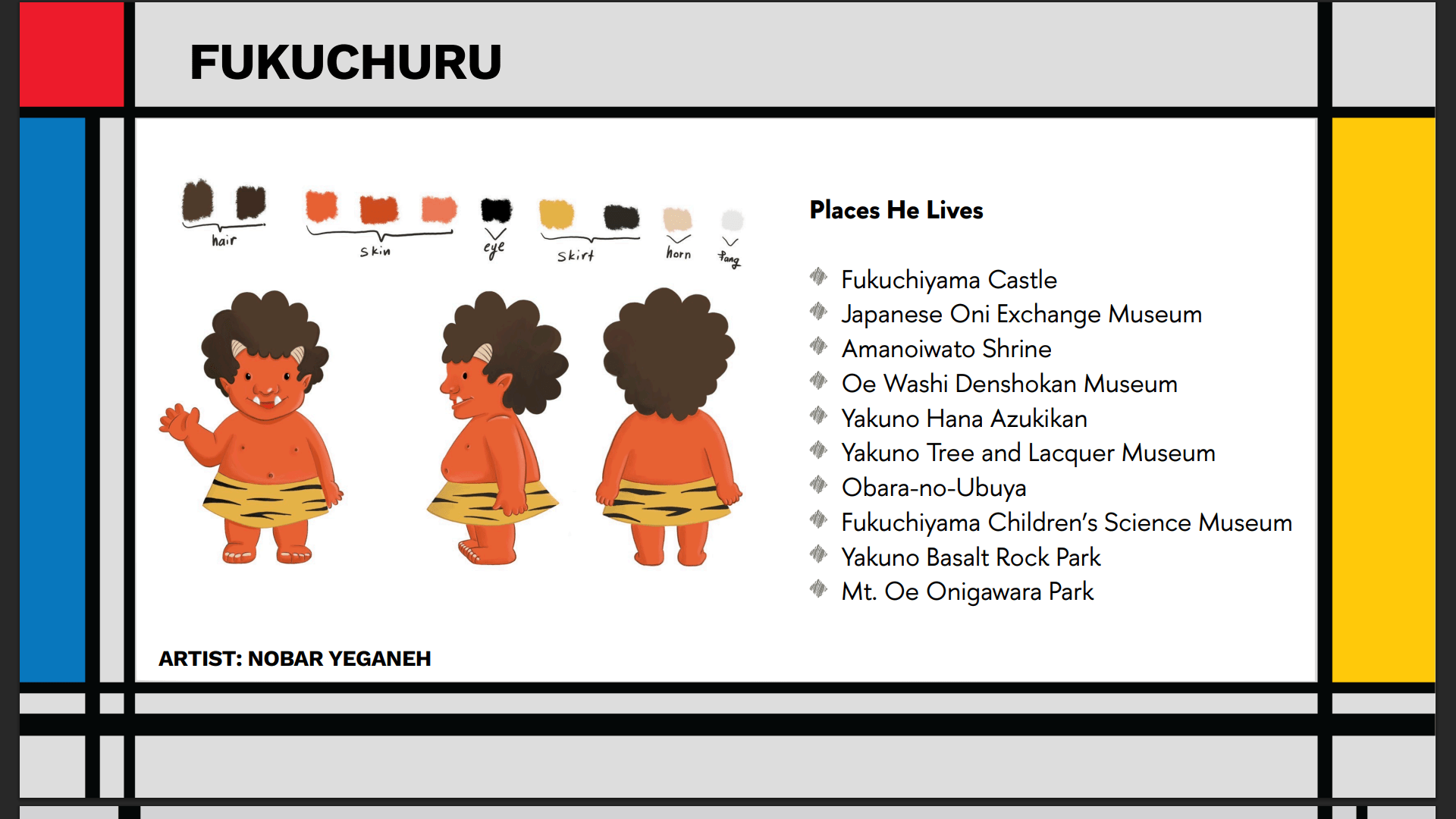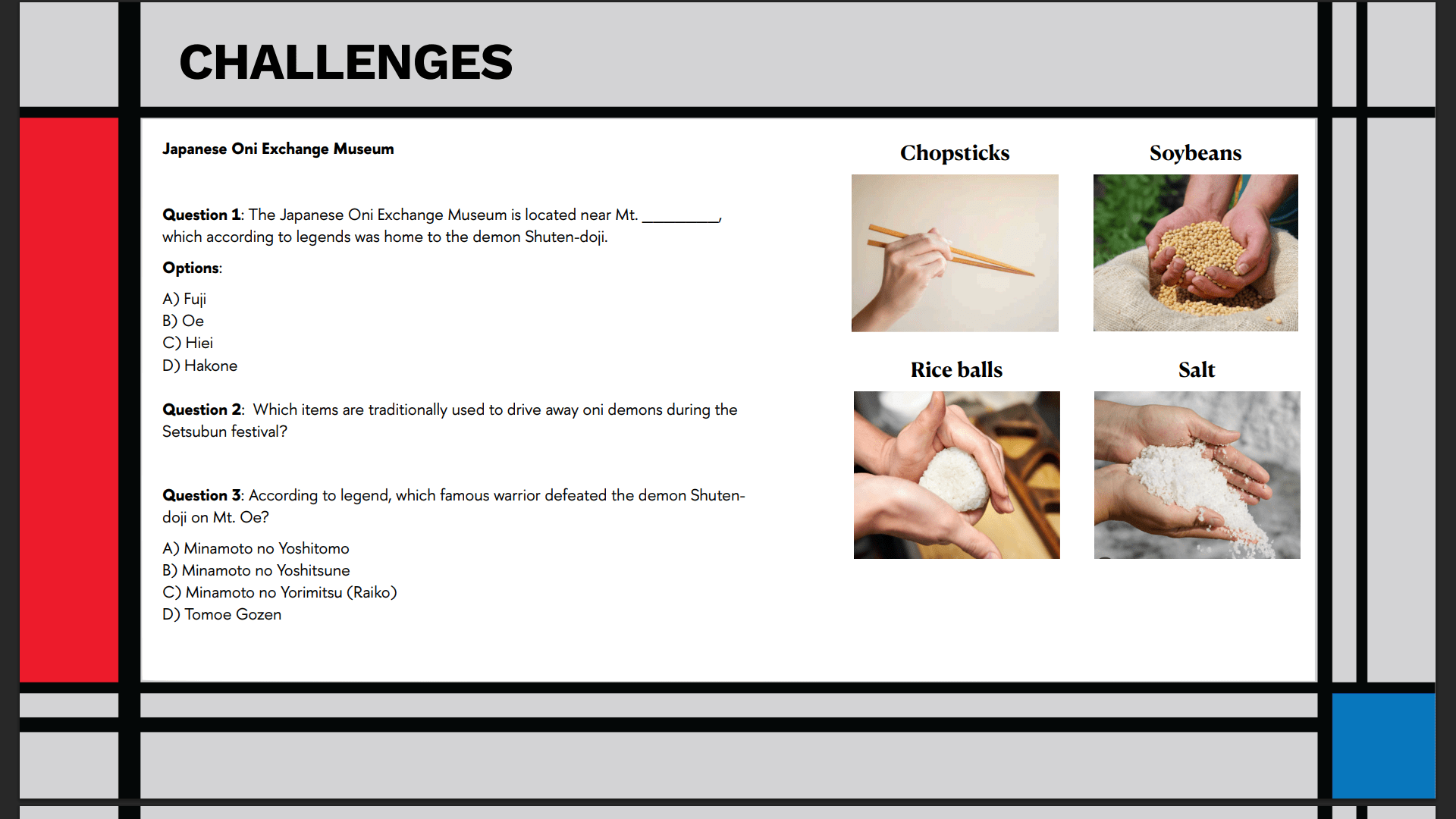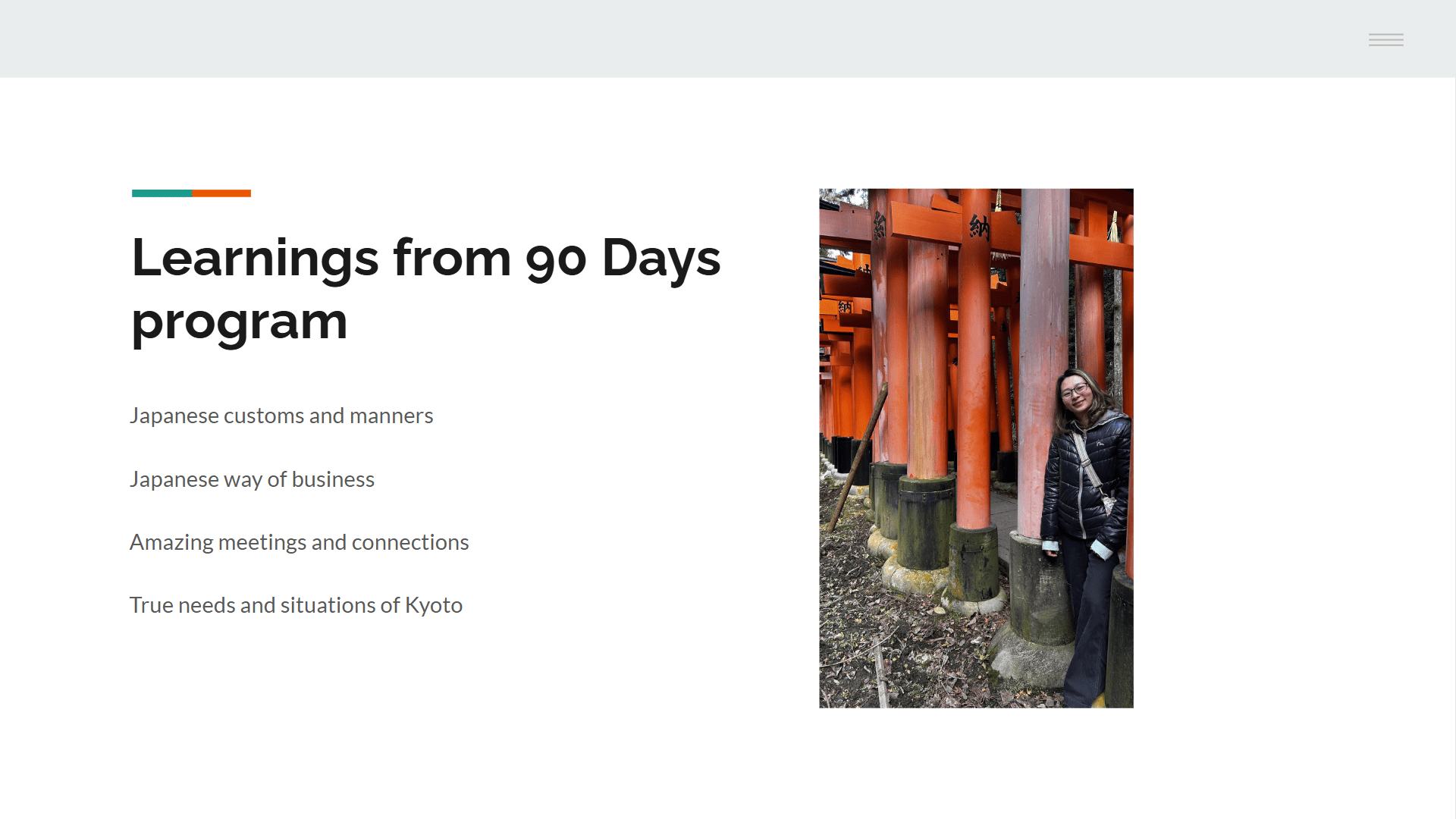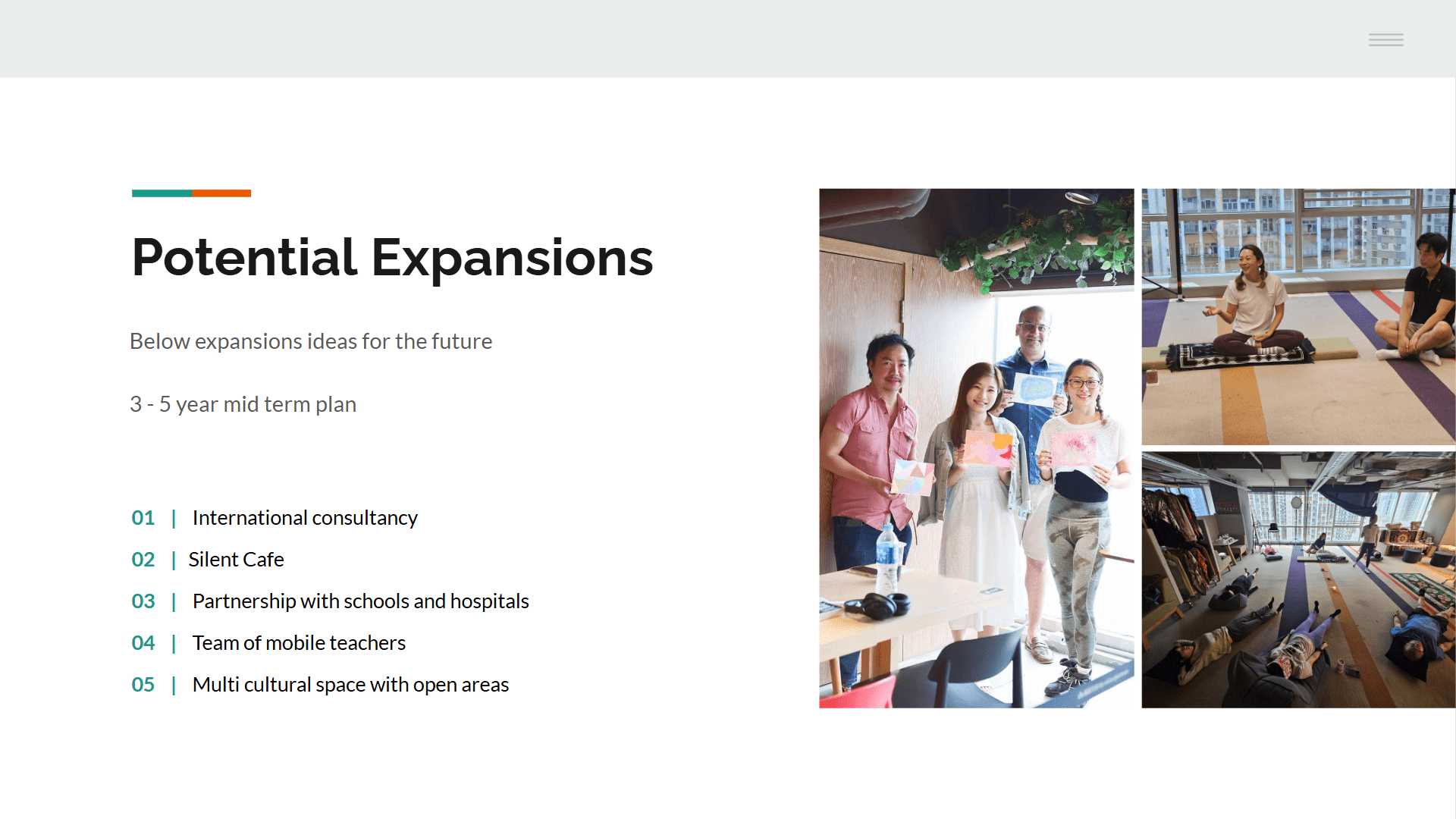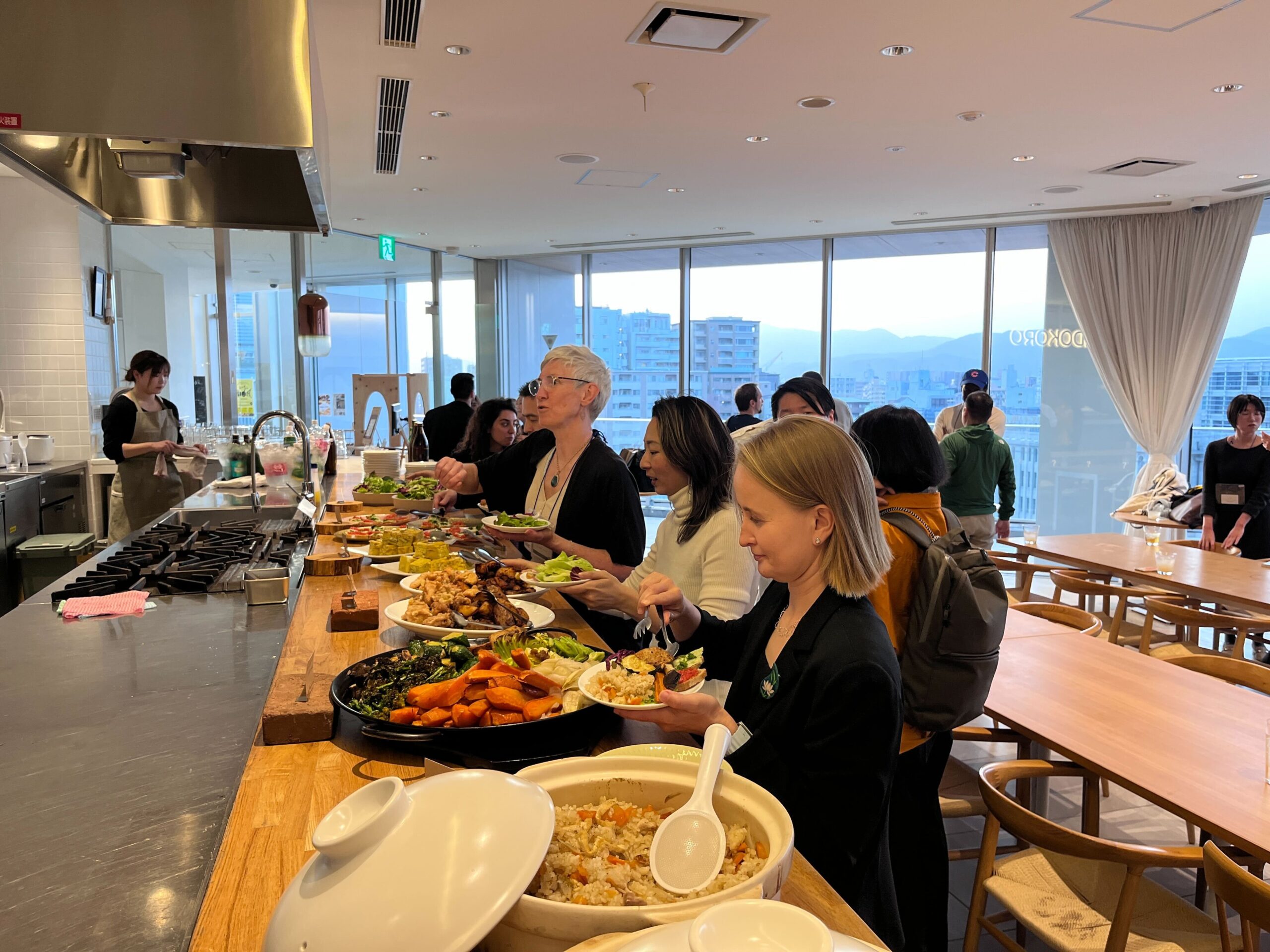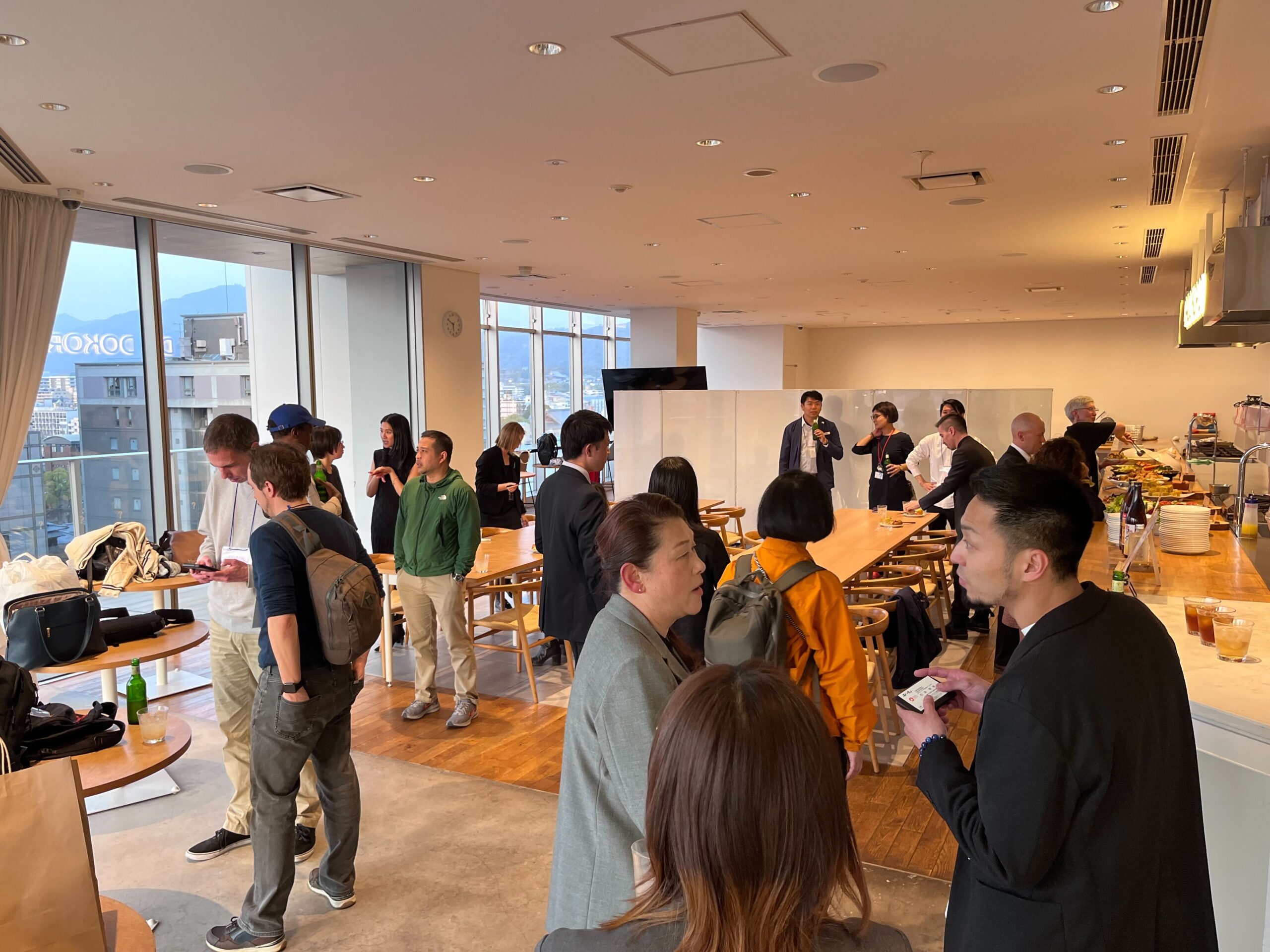News
Hello! 🐶 In this page, we report on the results of the “The 90 Days Kyoto Stay Program” held on March 25, 2025.
Held on February 7 Program Kick-off Event, it’s already been a month and a half since then. So far, with the support of the program management team, Kyo-sta Concierges, and Kyoto Sangyo 21, the participants have conducted various field researches, meetings, and networking to make their business plans more sophisticated and feasible.
This event was held as a place to present to everyone the business plan that has been upgraded as a result of such a 2~2 and a half month program participation period, along with what they learned through the program. The program itself will end at the end of March, but this is where their journey begins. Don’t miss the chance to meet new businesses that will change Kyoto in the future.
○ Opening
About 30 participants gathered on the 4th floor of the venue, and the debriefing session started in a friendly atmosphere.
▼Opening Remarks: Mr. Kamibayashi Hideyuki/Director, Department of Commerce, Industry, Labor and Tourism, Kyoto Prefecture
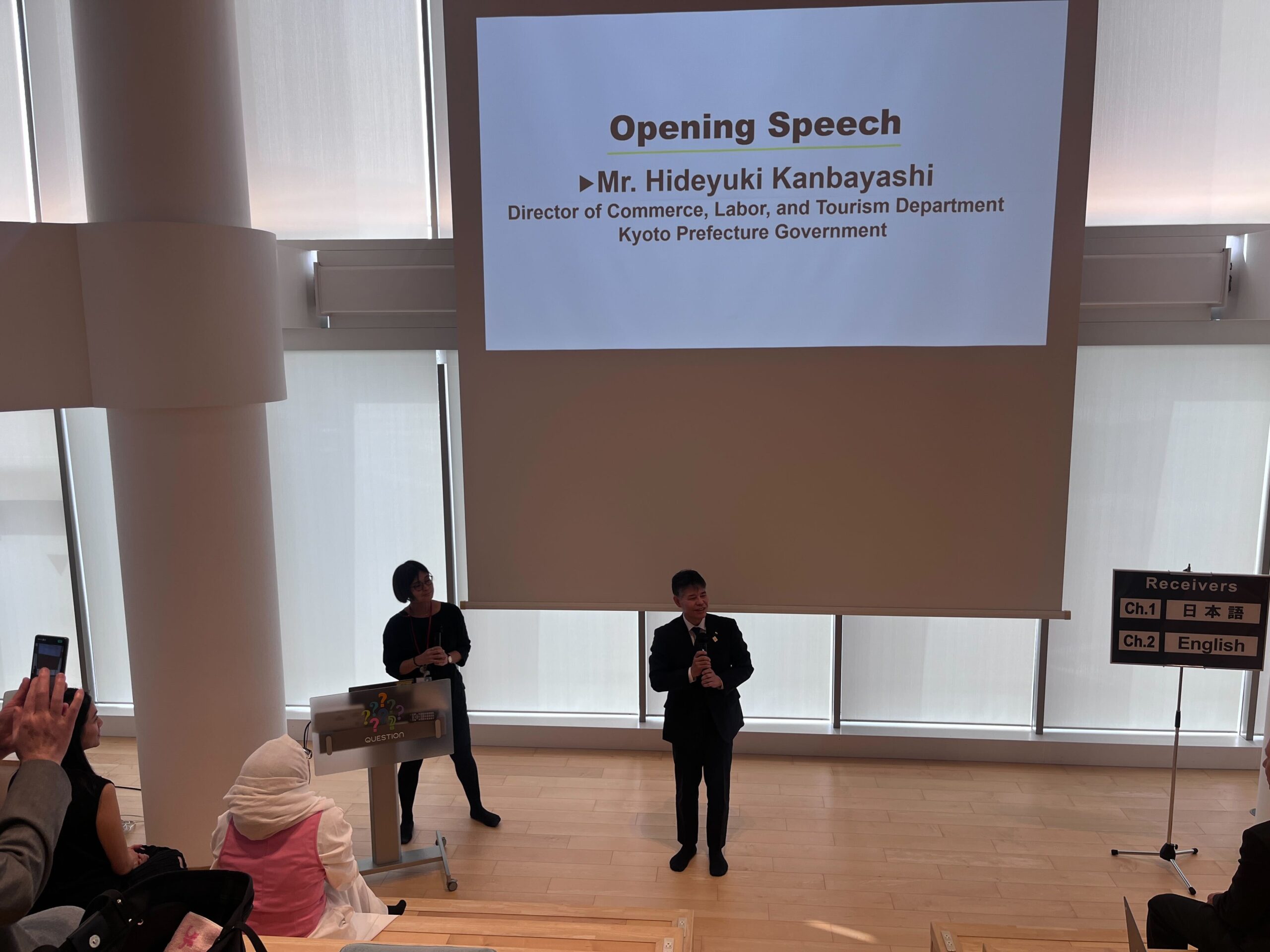
First of all, as an opening speech, we received a greeting from Mr. Kamibayashi, Director of the Kyoto Prefectural Department.
Thank you very much for joining us today. I am very pleased to have the opportunity to hear from the program participants what they have been working on in Kyoto over the past two months.
I love this building called QUESTION, which is the venue for today’s event. QUESTION, the meanning is an important element in Japanese as well. In the practice of Zen in Buddhism, there is something called “Zen Question and Answer(Zen-mondo, in Japaniease).” It is a practice in which the monk who is practicing asks questions, the master answers them, and the answers are obtained in the questioning. I feel that this is a wonderful place to get answers to the questions that participants have asked in the 90-days program.
This 90-days program is designed to create opportunities for people who want to start a business in Kyoto to experience various programs and learn what works and what doesn’t.
In Japan, it is an island country and currently has a foreign resident ratio of 2.5%. The Japanese people are not accustomed to coexistence in a multinational environment, and I think it is a country with a high hurdle for foreigners to start a business. In particular, the three challenges for foreigners to start a business in Japan are (1) language barriers, (2) institutional barriers, and (3) mental barriers. In this program, we have been working hard to overcome this barrier and provide various support to break it down.
I feel that in order for Japan to develop in the future, it is necessary to interact with people from all over the world. Listening to the results of today’s presentation, we would like to identify issues and use them as a stepping stone to support entrepreneurship in Kyoto in the future. We look forward to the presentations of the program participants.
▼ Overview, support review Hila
Next, Glocal Center staff member, Hila gave an overview of the program and gave a review of the initiatives.
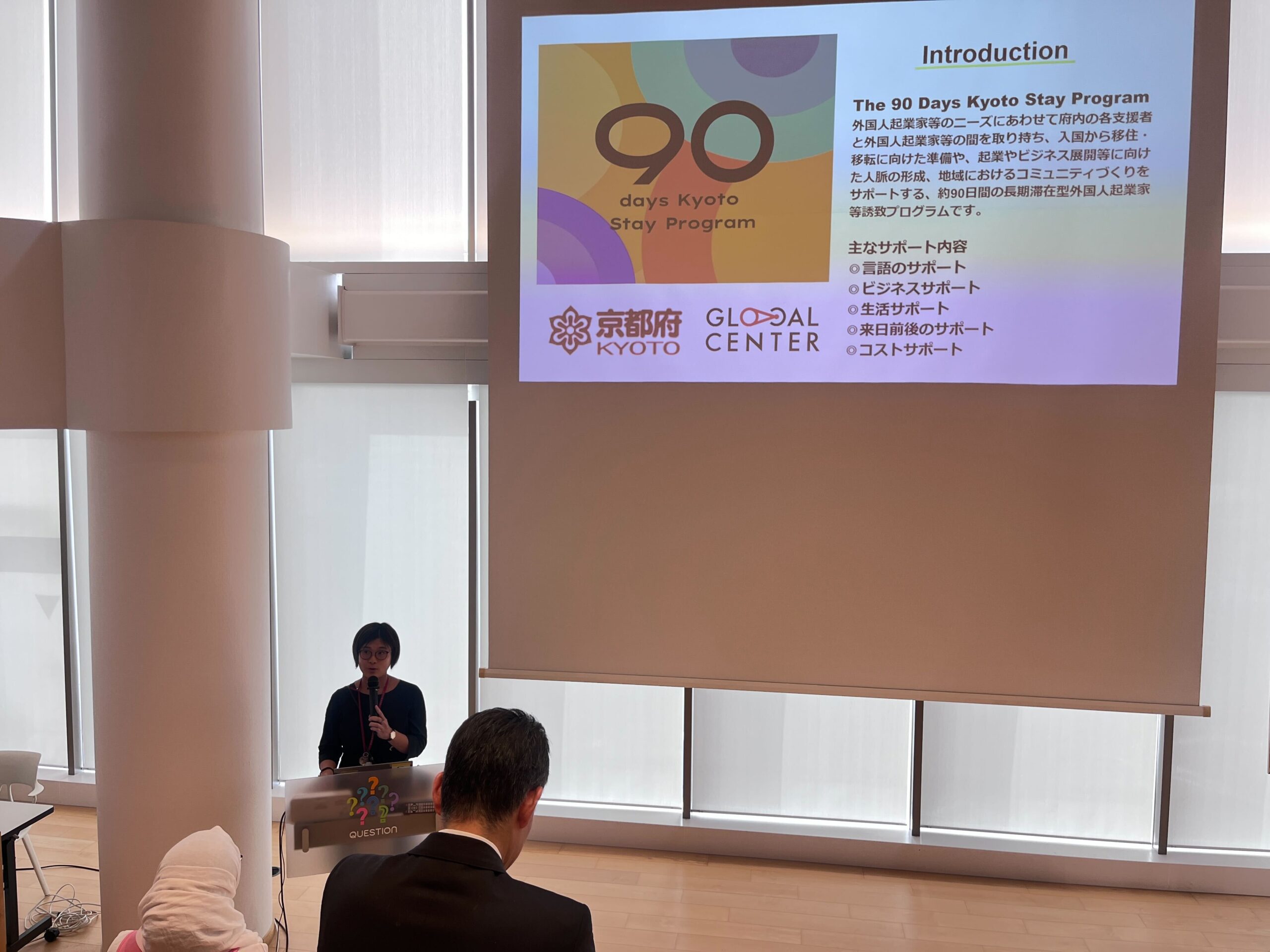
The long-term residency program for attracting foreign entrepreneurs has established a support system not only for language and business support, but also for small problems in daily life.
Over the past two months, we have given a wide range of challenges and supported them, including field trips to various parts of Kyoto Prefecture, matching with key people in each region and sector, collaborating with municipalities, and accompanying them to participate in events. We also had the opportunity to speak with the Governor of Kyoto Prefecture.
We also believe that support after the program is a very important point. Currently, we are collaborating with Kyoto International Startup Center, Kyoto Sangyo 21, KIEC, etc., to obtain startup visas and support the launch of businesses.
I am very much looking forward to the presentations from the participants who have spent two months in Kyoto.
○ Presentations by program participants
After the greetings, the program participants began their presentations (report on the results). In this note, I will describe a simple summary of the content of the presentation and the question and answer session, but there may be an area that you are interested in or that you can make use of your personal connections. Please take a look!👀
▼Presentation (1) Ludan
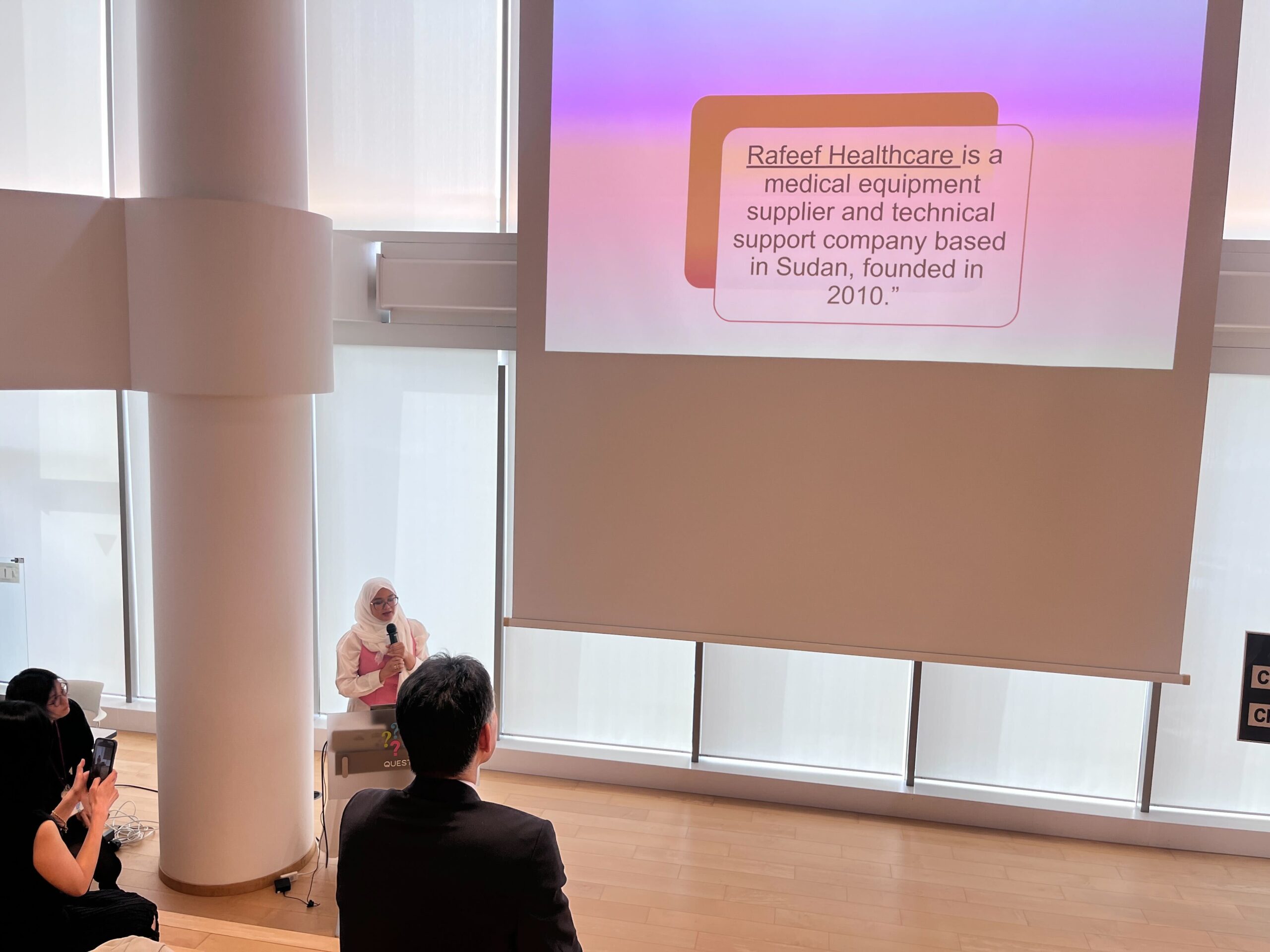
▼ Background of participation in the program
“Introducing Japan’s advanced medical equipment and medical technology to medical institutions in Africa”→ currently in managementRafeef Medical CompanyI would like to stay in Kyoto as part of the project and build a network with medical institutions and medical device manufacturers to build a cooperative relationship between Africa and Japan in the medical field. In addition, in order to further build a supply chain, we participated in the program to explore a network in Kyoto, Japan, which boasts advanced medical technology.
▼ What I learned in the program
I was able to deepen my understanding of advanced medical technology. In addition, the general exhibition of medical,nursing care, and healthcare “Medical Japan,” I was also able to
connect with companies. Also, we made connections with Shimadzu Corporation, which medical device manufacturers in Kyoto, Japan. Everything I encountered in this program, including new technologies such as nurse support robots, was the embodiment of advanced medical care. Throughout the program,In addition to connecting with companies, I was able to gain cross-cultural communication skills and personal connections, and I feel that my overall professional skills have improved.
▼ Future prospects
Through the program, I received practical insights and inspiration for the future, and my desire to innovate in medicine was inspired. We would like to continue to have relationships with the medical field in Kyoto and Japan, and develop our business so that we can introduce Japan’s advanced medical technology to Africa.
▼Q&A① Ludan
After the presentation, there was a Q&A time between presenter and participants.
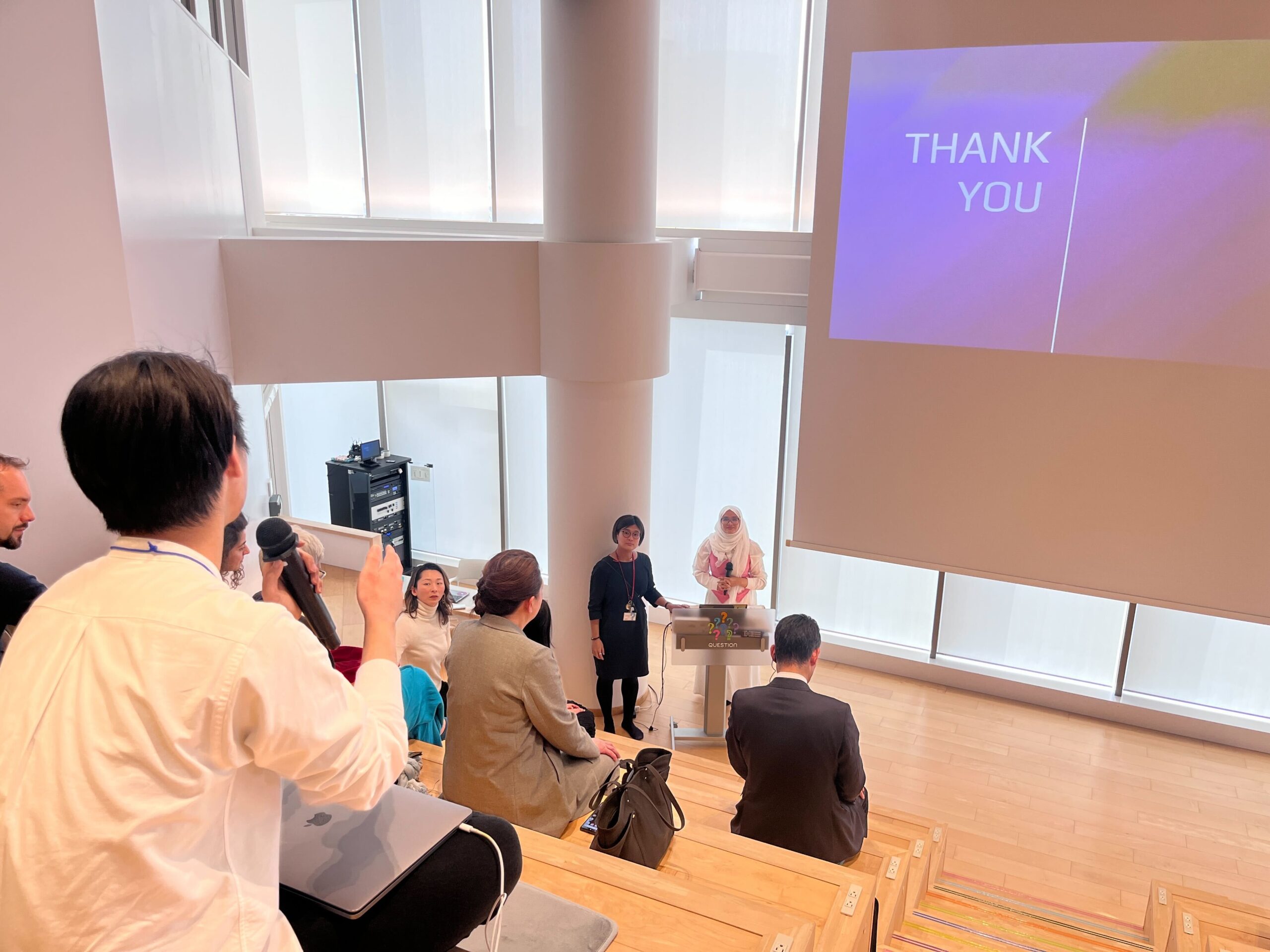
Q. In Africa, I think there are difficulties in terms of whether local doctors have the skills to handle medical equipment in Japan. What does Ludan’s company do as a supplier?
A. As the exclusive distributor of large medical equipment in Africa, my company imports medical equipment, but we also provide a wide range of after-sales support, such as training for local medical personnel and the installation of medical equipment.
Q. How did you get a connection with a large company like Shimadzu?A.Hila, the program coordinator, QUESTION, and the program management introduced us to the company. I was able to create an opportunity to talk with Shimadzu managers, engineers, and salespeople. Thanks to the program management, we have also gained connections with other companies such as OMRON.
▼Presentation (2) Yvonne
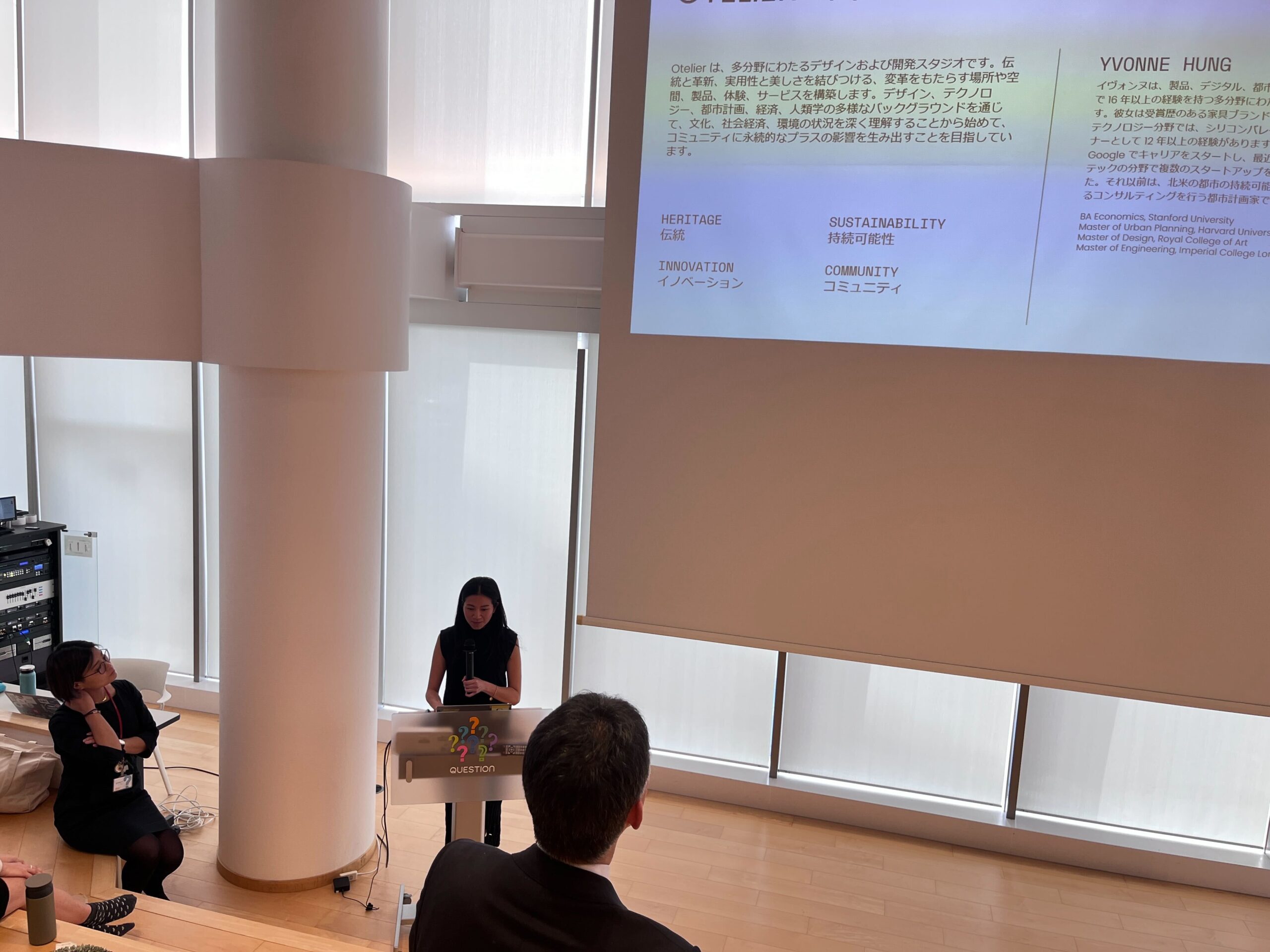
▼ Background of participation in the program
“Creating rural communities with dedicated land and shared amenities for small-scale farming”
→As a quick and direct solution to the rapid population decline in region, I want to reduce barriers to rural migration and create livable rural areas (rural communities). To this end, I participated in this program to explore the possibility of public-private partnership initiatives, such as attracting various companies and collaborating with tech companies and the government.
▼What I learned in the programI deepened my understanding of Japan’s local areas, such as learning that each “local” area in Kyoto Prefecture has its own characteristics. And on the field trip, it was very meaningful to actually talk to the community. In particular, I was able to talk with people who have experienced U-turns and I-turns, and I felt that they would be the key to regional revitalization. I was also surprised by the number of unused farmland, vacant houses, and abandoned schools.
As for the needs of people who already live in the local area, I learned that the older generation wants to pass on the responsibilities of festivals, cleanup, forest maintenance, etc. to the younger generation. However, I also understood that the younger generation has a family and a job, and it is difficult to take over responsibilities. In addition, residents feel a sense of crisis, saying, “Something has to change, otherwise the town will disappear.” At this point, I felt the need to proceed with the plan from a long-term perspective, not from a short-term perspective, but in units of 100 years.
In the course of the plan, we examined migrants or potential migrants (people who may move in the future) and grouped them according to the period of their visit to the area, such as one day, a few days, a month, a weekend only, or permanent residence.In view of the economic feasibility, we are considering proceeding in the form of BtoB or BtoBtoC instead of BtoC. We would like to expand it to include DtoC in the future, using the source of income by renting out space for corporate training, obtaining subsidies, and generating added value from tours/workshops.
I am also looking to collaborate with AI farmers and other technology fields. In addition to individual initiatives, cooperation with developers, government agencies, and municipalities is also essential.
▼ Future prospectsCurrently, I am still in the process of conducting the survey, but we would like to find a partner for the survey and make the plan a reality.
▼Q&A② Yvonne
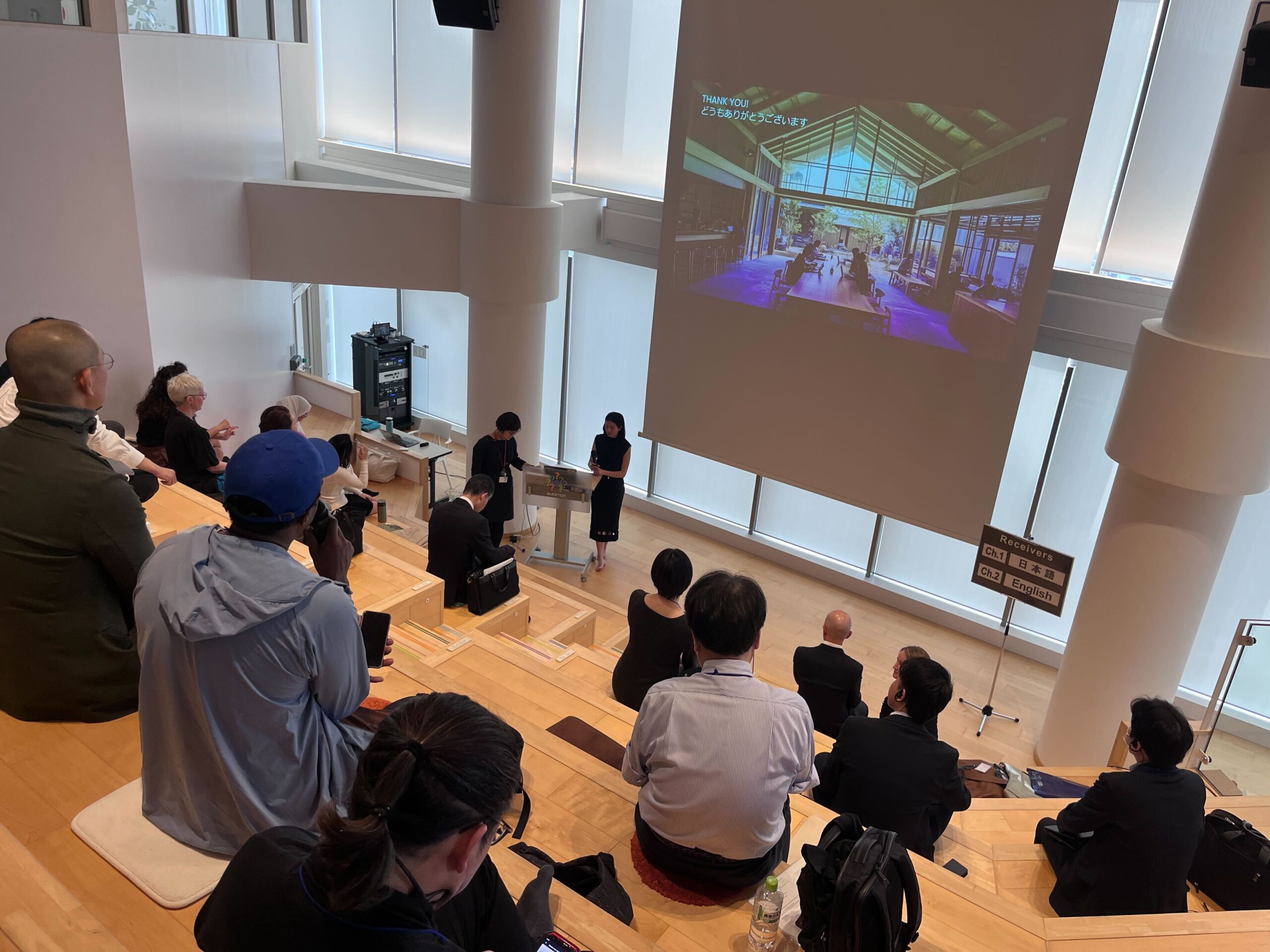
Q. In terms of Yvonne’s vision, which part of Kyoto do you want to work on community building? Also, why do you think the area is good?
A.Personally, I think it would be good to have an area where there is already some commerce, so I am assuming Keihoku, Nantan, and the surrounding area of Ayabe.
Q. It’s a large-scale project. It was so great that I wanted to be a part of it. Do you have specific goals for the project (the criteria for success if you achieve this) or KPIs?
A. First of all, I think it’s important to know how people come to the community as tourists and keep coming back. And I think the key will be how many of them will be part-time (e.g. only on weekends) or full-time migrants. Another criterion is GDP. Even if it’s not growth, I want to improve and maintain it to a stable level.
Q. This may be an ironic question, but in 2023, about 720,000 newborns died in Japan, while about 1.55 million died, and about 800,000 people die every year. With the population declining so drastically, isn’t it possible to increase the population as a whole simply by moving the population from the cities to the countryside?
A: Certainly, some people may think that saving local towns is a good thing, but I think it is meaningful to create a flow of population from cities to the countryside in terms of the inheritance and survival of Japan’s identity and culture. Also, in the city some choose not to have children for social, emotional and psychological reasons. I don’t have specific data, but I personally have the impression that the countryside is a better environment for having children, and I think it’s a worthwhile experiment.
▼ Presentation (3) Tim & Eva
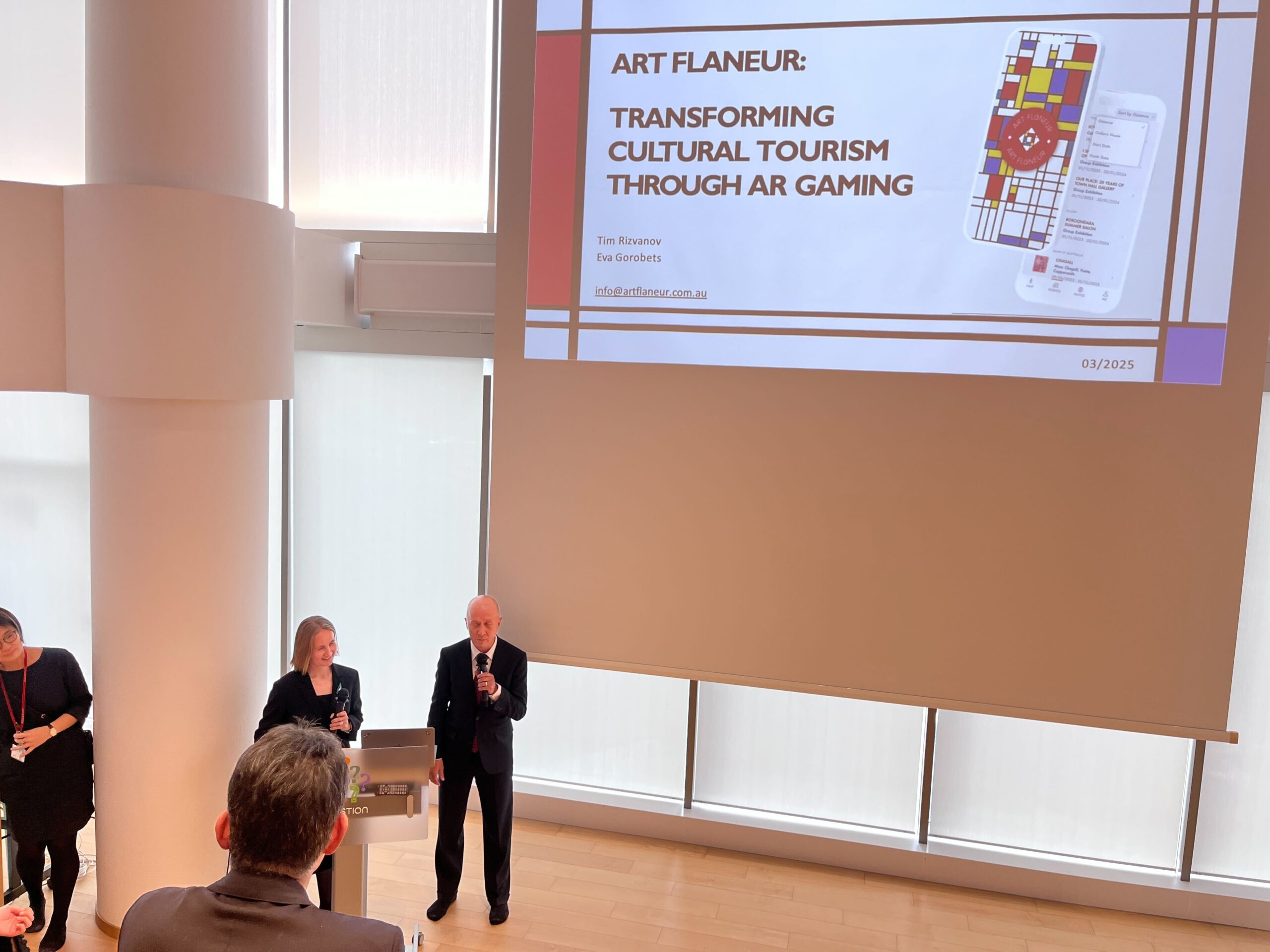
▼ Background of participation in the program
“Developing a platform application “Art Spirits” that links museums and galleries in various regions
→ We want to develop an app that centralizes information on galleries and museums and provides an art experience that is in line with the traditional culture of Japan while utilizing gamification, AI, characters, etc., and contributes to the development of art and the dispersion of overtourism and tourists. We want to connect with art/cultural event organizers, business/facility operators, tourism organizations, engineers, and people who know the local community to develop the app.
▼ What we learned in the programWe were able to meet many people in the program. We also held meetings with representatives of Kyoto City, Fukuchiyama City, and Metropolitan Capital.
In an exciting development, we had the opportunity to collaborate with local artists. The artist has developed a local character with a demon(Oni in Japanease) motif.
As a game, the Oni character provides users with 60 challenges, and the challenges are activities that allow users to enjoy the area, such as quizzes related to each location.
▼ Future prospectsAlthough the development of the business model will not change significantly from the original plan, I feel that cooperation with local governments is very important. We would like to focus on appropriately attracting tourists and increasing the engagement of visitors and young people through gamification. At this stage, we know that there is a lot of interest in maps, so we would like to incorporate functions that can be customized by ourselves.
The next goal is to get a start-up visa. If we can get a visa, we will return to Kyoto, and we will be able to work on “Art Flaneur“, which we want to build a local branch office. We would like to collaborate with Fukuchiyama City to plan new events and festivals and incorporate them into the app. The city will also cooperate by posting the QR code of the app on its website. They also mentioned the possibility of providing subsidies, and we are considering returning to Kyoto around August~September to establish a company.
▼Q&A③ Tim&Eva
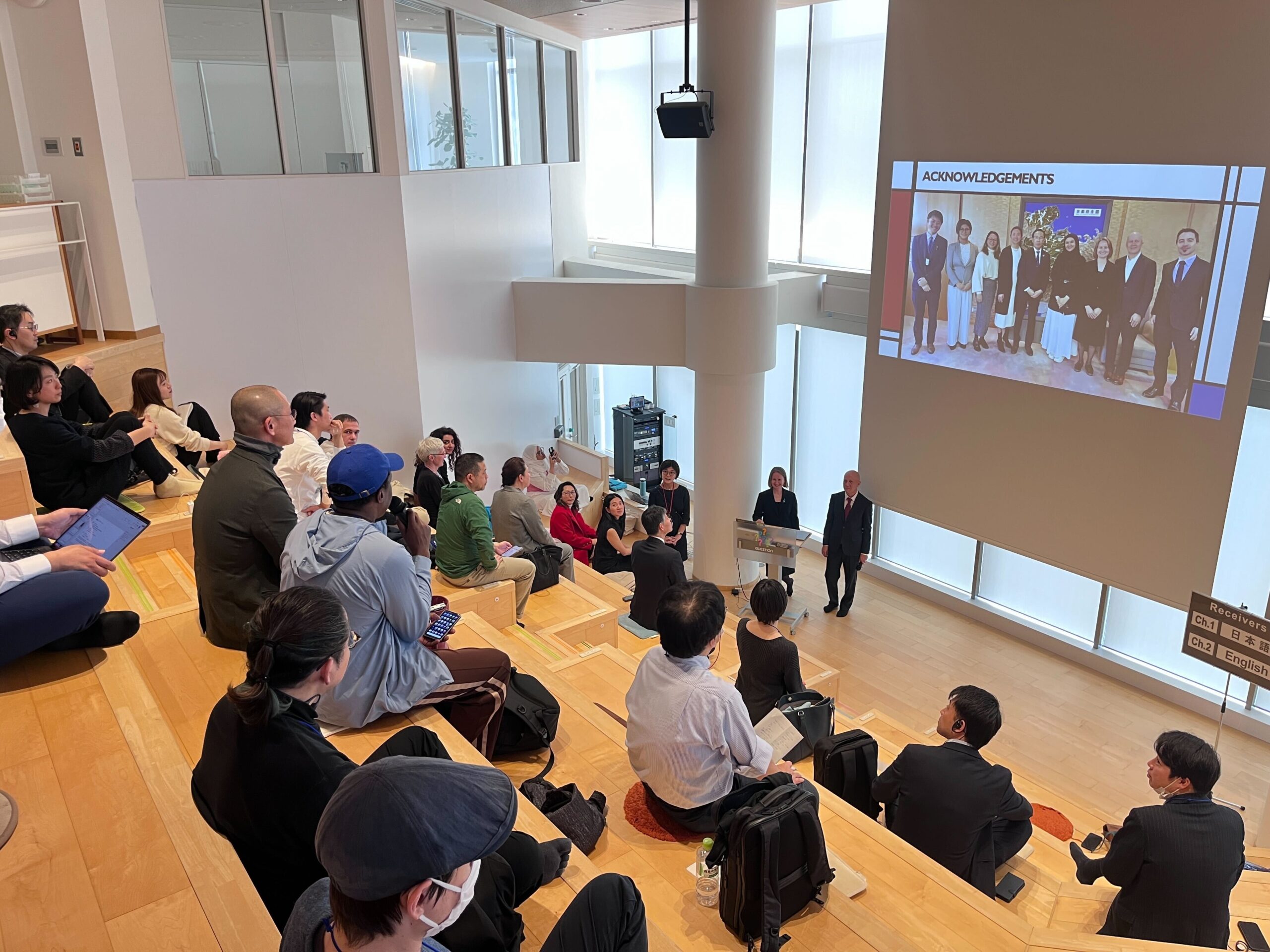
Q. What kind of user will be the first user? Also, what kind of regions do you envision for deployment?
A. The target is international tourists, especially those who can speak English. It also targets people who like games. As a development area, we feel that Fukuchiyama City has great potential.
In addition, since the gathering of people at major tourist spots exists as a common problem around the world, we would like to spread this movement not only to Kyoto and Japan, but also to many countries.
Q. Is there an incentive to use the app?A. You can use the app to complete challenges and accumulate points to earn merchandise and tickets. Another great point is that you can learn about the culture. The main target is expected to be international travelers. Some travelers want to go to places other than urban areas and major tourist destinations, but a lot of information is only available on only Japanese websites, and it is not aggregated on one site, and it is disjointed, which is a high hurdle for non-Japanese speakers. We believe that by aggregating information on a single site/platform, it will be easier for people from overseas to go to the suburbs.
▼ Presentation (4) Michelle
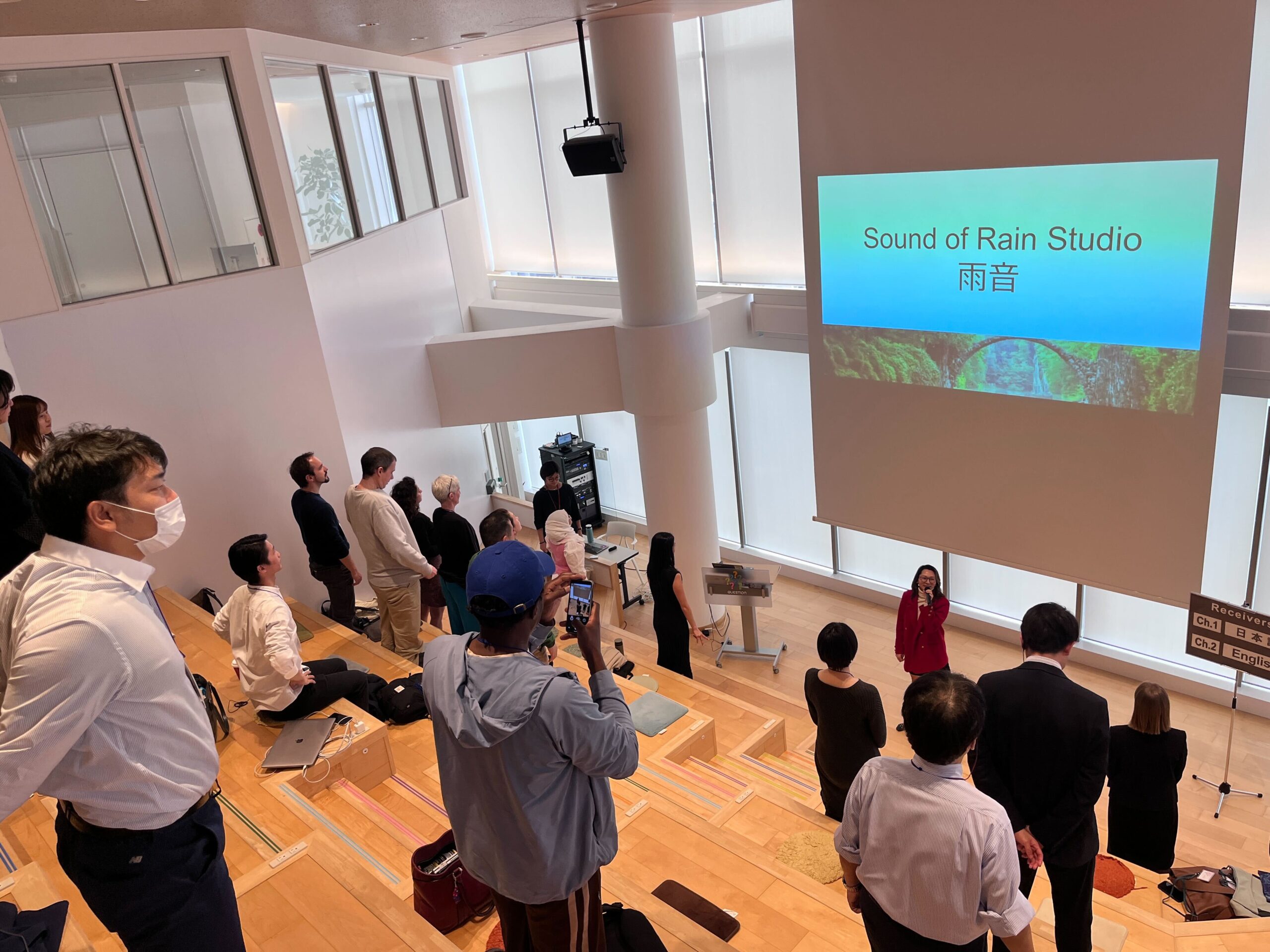
▼ Background of participation in the program
Promoting people’s health in the countryside of Kyoto→ I want to contribute to people’s physical and mental health through “mindfulness“. With the goal of collaborating with people who are interested in mindfulness, I participated in the program to connect with various people in Kyoto.
▼ What I learned in the programBy participating in the program, I was able to network and meet people. I was also able to gain motivation to learn Japanese while learning about business. I stayed in Kyoto for a long time and was able to deepen my understanding of Kyoto.
As a business, we were able to deepen our concept in the following four points.
(1) I want to do mindfulness for people who are thinking of moving to the countryside. Mindfulness/yoga can help you relieve stress, and being in touch with nature in the countryside can help you think about a lot of things.
(2) We want to attract tourists to the countryside for Chinese people. I would like to take advantage of the fact that i can speak Cantonese to tackle the problem of overtourism, where people are concentrated in major tourist destinations. There are many services for English speakers, but there are still few services for Chinese speakers, and I feel that there are opportunities.
(3) Although the investigation is still ongoing, I would like to consider crossover with marriage support in the future.
(4) I would like to open a “silent café” where people don’t have devices, don’t talk, and spend time doing nothing with snacks and coffee.
▼ Future prospects
First of all, as a prospect for the next 3~5 years, I would like to work on opening a silent café and supporting the introduction of mindfulness in schools and hospitals. Overseas, there are cases where mindfulness is implemented in schools and hospitals, and it can contribute to efficient refreshment. I hope to reach this initiative in various rural areas of Kyoto. Also, through the Silent Café, I want to create a place where various people gather, like this place today.
▼Q&A④ Michelle
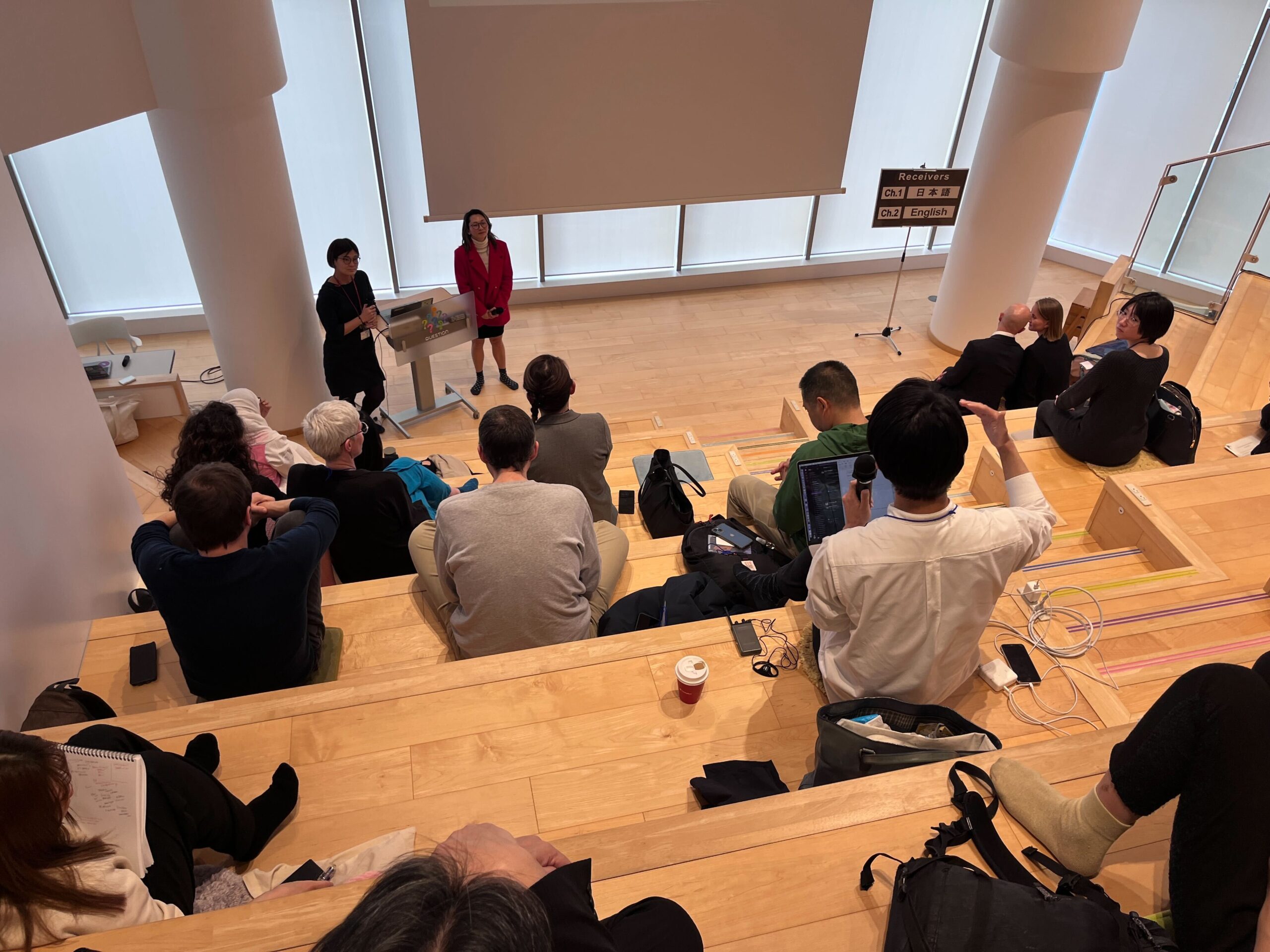
Q. How will you bring your ideas to life?
A. I am already in the process of holding meetings with Ayabe City. I would also like to work with immigrant communities to promote migration. Moving and changing one’s life with migration is a big challenge for the individual, and that’s why I believe mindfulness is so meaningful. In the future, I would like to collaborate with people I have already met.
Q. How do you benefit from your business model? Is it class-based?A.I think there are various models. In some cases, we receive money from the hotel to hold yoga classes sponsored by the hotel, or we share the income. The hallmark of mindfulness is that it is highly profitable. Basically, there are no costs such as capital investment and studio maintenance costs, and the hurdles to introduction are not high.
Q. What challenges do you see for Michelle?A. First of all, obtaining a visa is an issue. In addition, schools and hospitals are not open in Japan, and I feel that there is a gap between them and other countries such as California.
○ Closing
After the presentations from the program participants, the Glocal Center staff Hila gave a closing address.
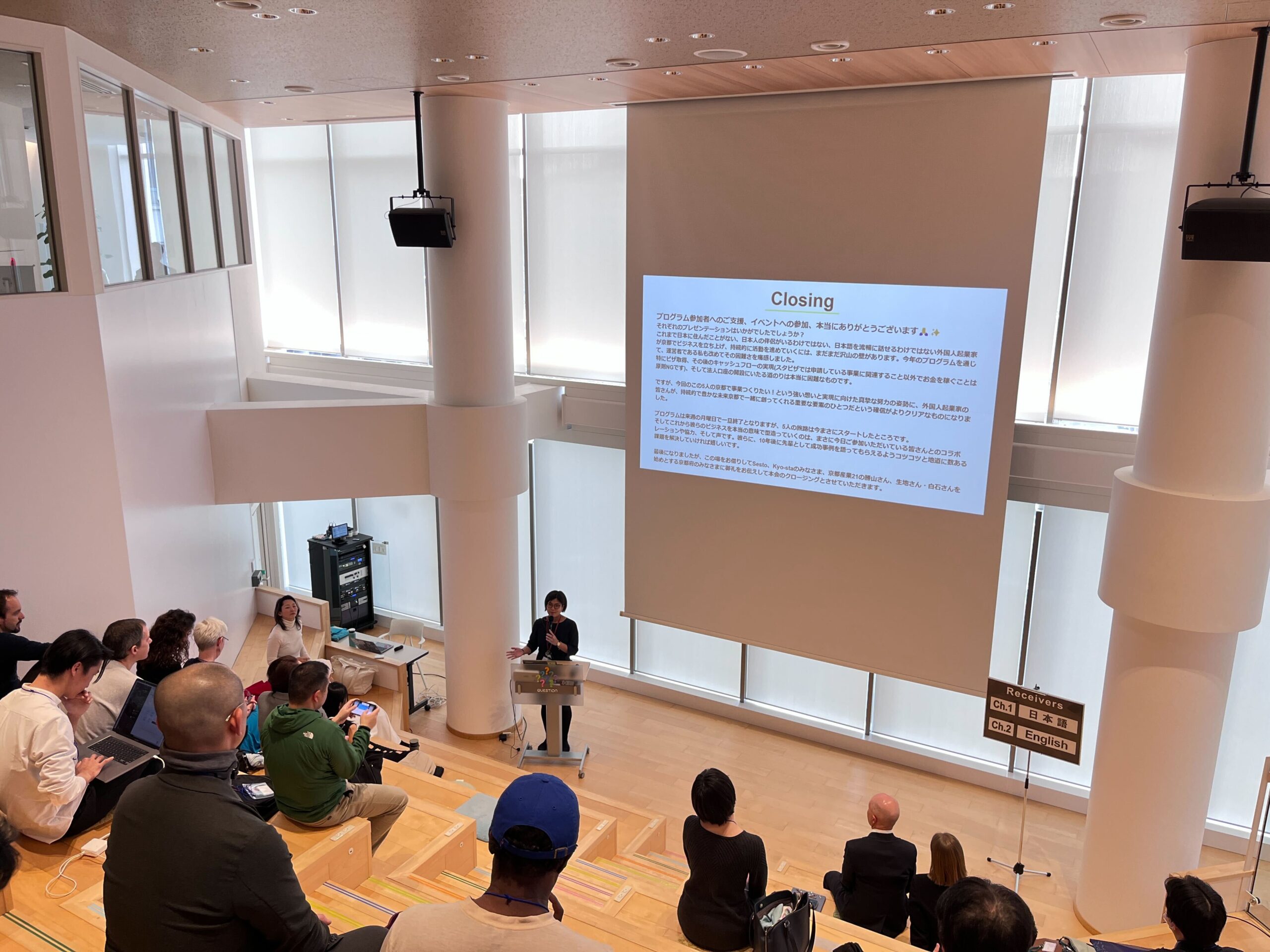
There are still many barriers for foreign entrepreneurs who have never lived in Japan, do not have a Japan spouse, or do not speak Japanese fluently to set up a business in Kyoto and proceed with their activities sustainably. Through this year’s program, I, as the organizer, was keenly aware of the difficulties involved. In particular, the path to obtaining a visa, realizing the subsequent cash flow, and opening a corporate account is really challenging.
However, the strong desire to create a business in Kyoto and sincere efforts to realize made it clearer for me to be convinced that foreign entrepreneurs are one of the important elements that will work together to create a sustainable and prosperous future in Kyoto.
The program has come to an end, but the journey of the five of them has just begun. And what will truly shape their business from now on is the collaboration, cooperation, and voices of all of you who are here today. I would be happy if we could solve a number of problems steadily and steadily so that they can talk about their success stories as seniors 10 years from now.
Last but not least, I would like to take this opportunity to express my gratitude to everyone at Sesto, Kyo-sta, Mr. Katsuyama of Kyoto Sangyo 21, Mr. Oiji and Mr. Shiraishi, and everyone in Kyoto Prefecture.
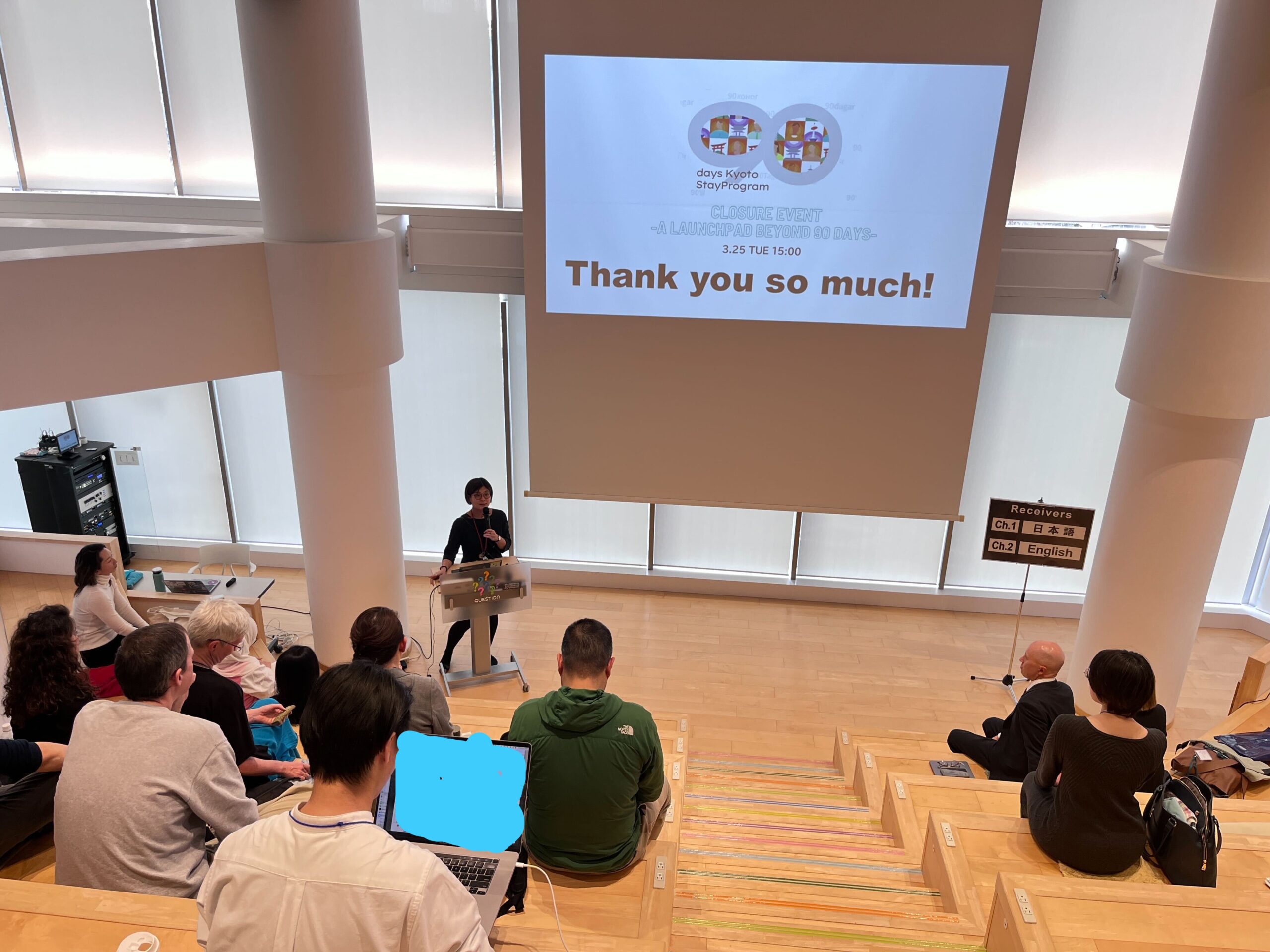
Even after the closing, there was still a lot of interaction between the participants.
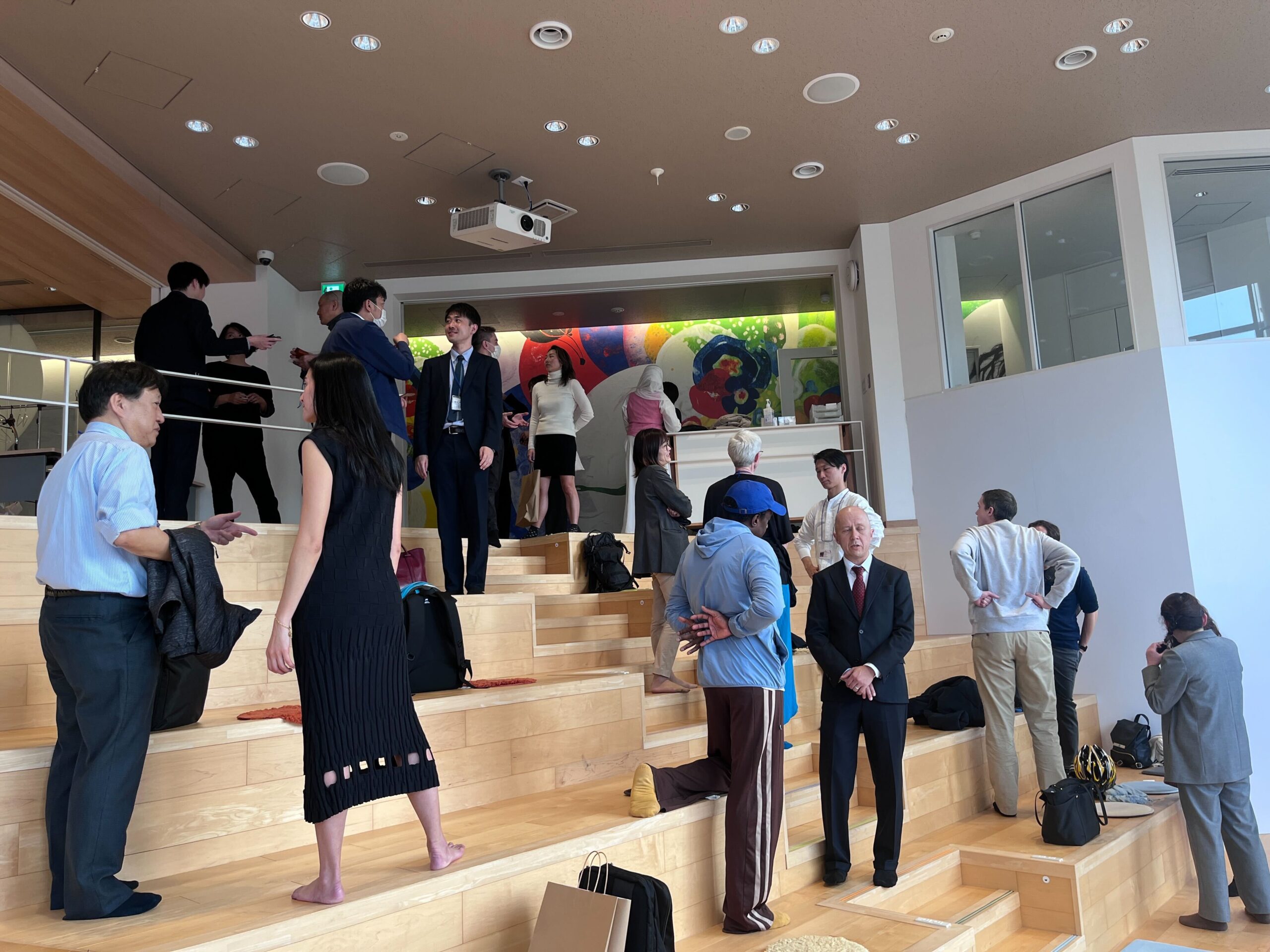
○ Networking events
After the debriefing session, we moved to QUESTION 8F and had a lively exchange meeting with food and drinks in hand🍸
▼ Greetings from Sesto & participants
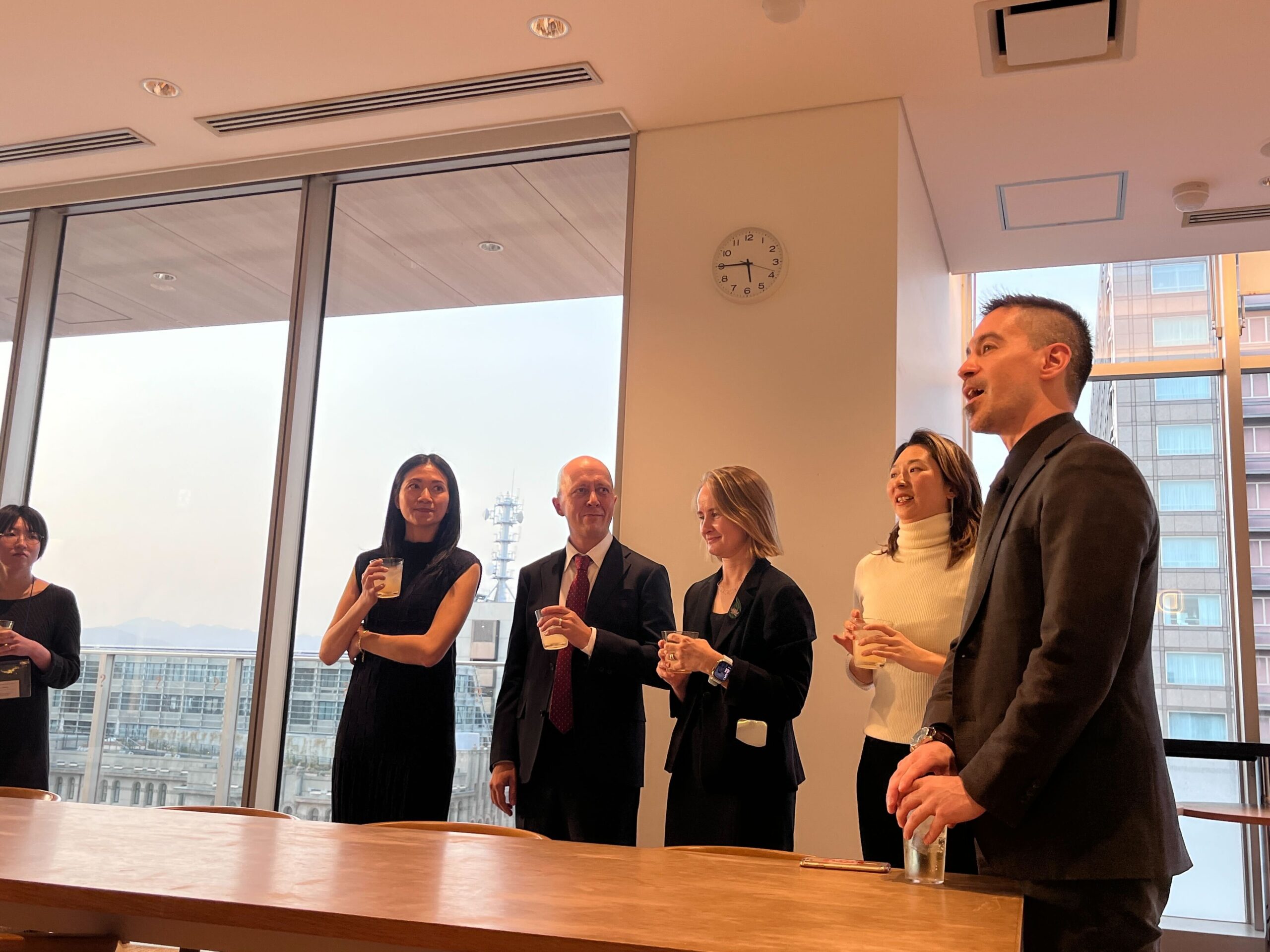
First of all, Mr. Sesto (KIEC) gave a toast, and the participants of the program gave a few words of greetings, and the exchange meeting started, and everyone who cooperated with the program expressed their gratitude and enthusiasm for the future. 🍻
The second half of the event was a collaboration project with KIEC (Kyoto International Entrepreneurs Community).
KIEC was started by Hila in December 2018 to foster a loosely connected community where foreign entrepreneurs, Japan entrepreneurs with an international perspective, and individuals, organizations, and the government that creates the systems that support such entrepreneurs gather across the board. Currently, Sesto hold an event once a month as an open place where participants can share their information, experiences, and diverse ideas.
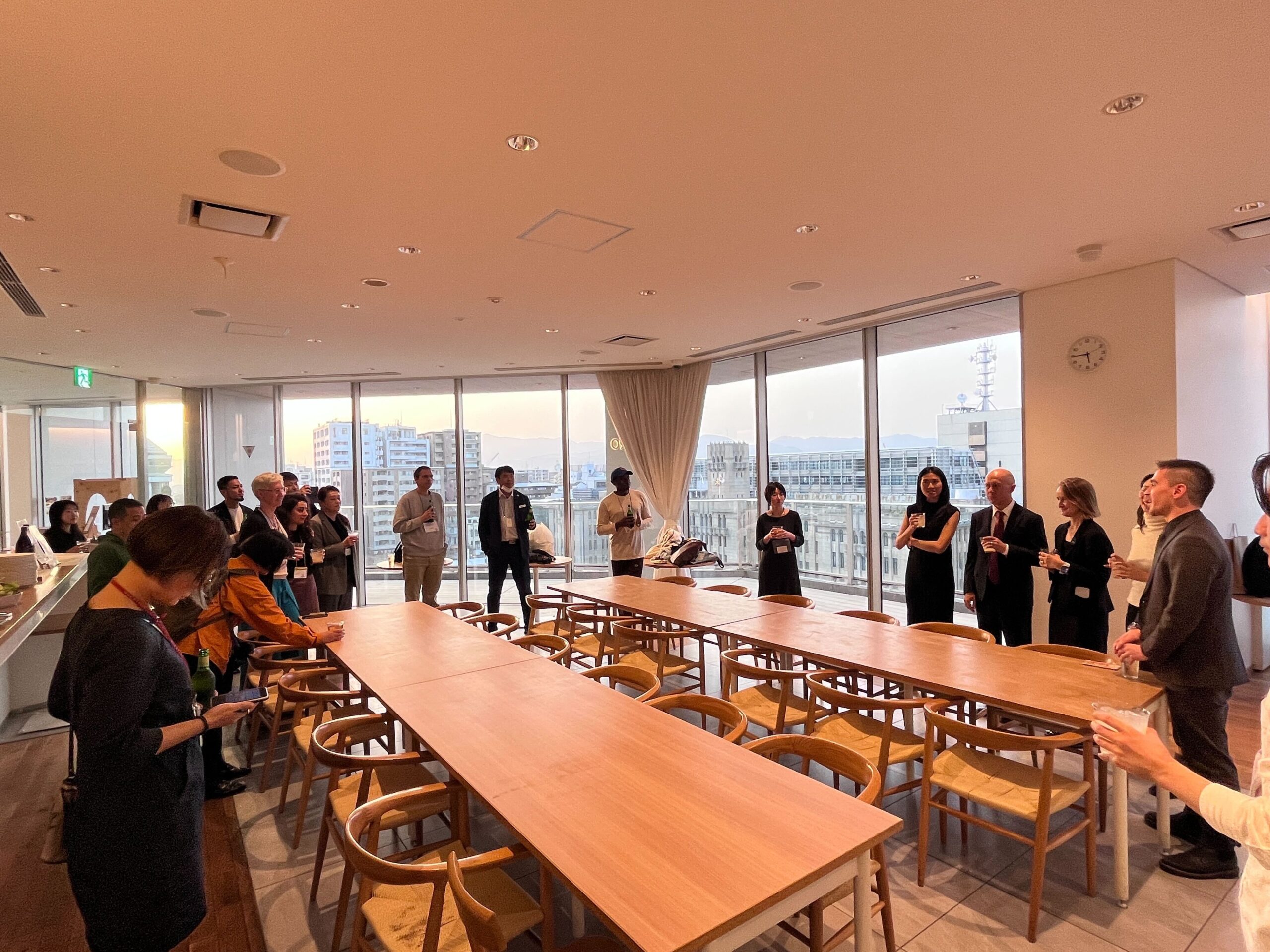
▼ Chat time
During the chat time, program participants and event participants could be seen talking to each other, and there were many scenes where new connections were made.👀 Although this year’s program ended, it was a very meaningful time for the program participants to start and develop their respective businesses in the future.
▼ Closing remarks Mr. Andachi/Director, Industrial Promotion Division, Ministry of Commerce, Industry, Labor and Tourism, Kyoto Prefecture
At teh end of the networking events, we received a closing speech from Mr. Andachi of Kyoto Prefecture.
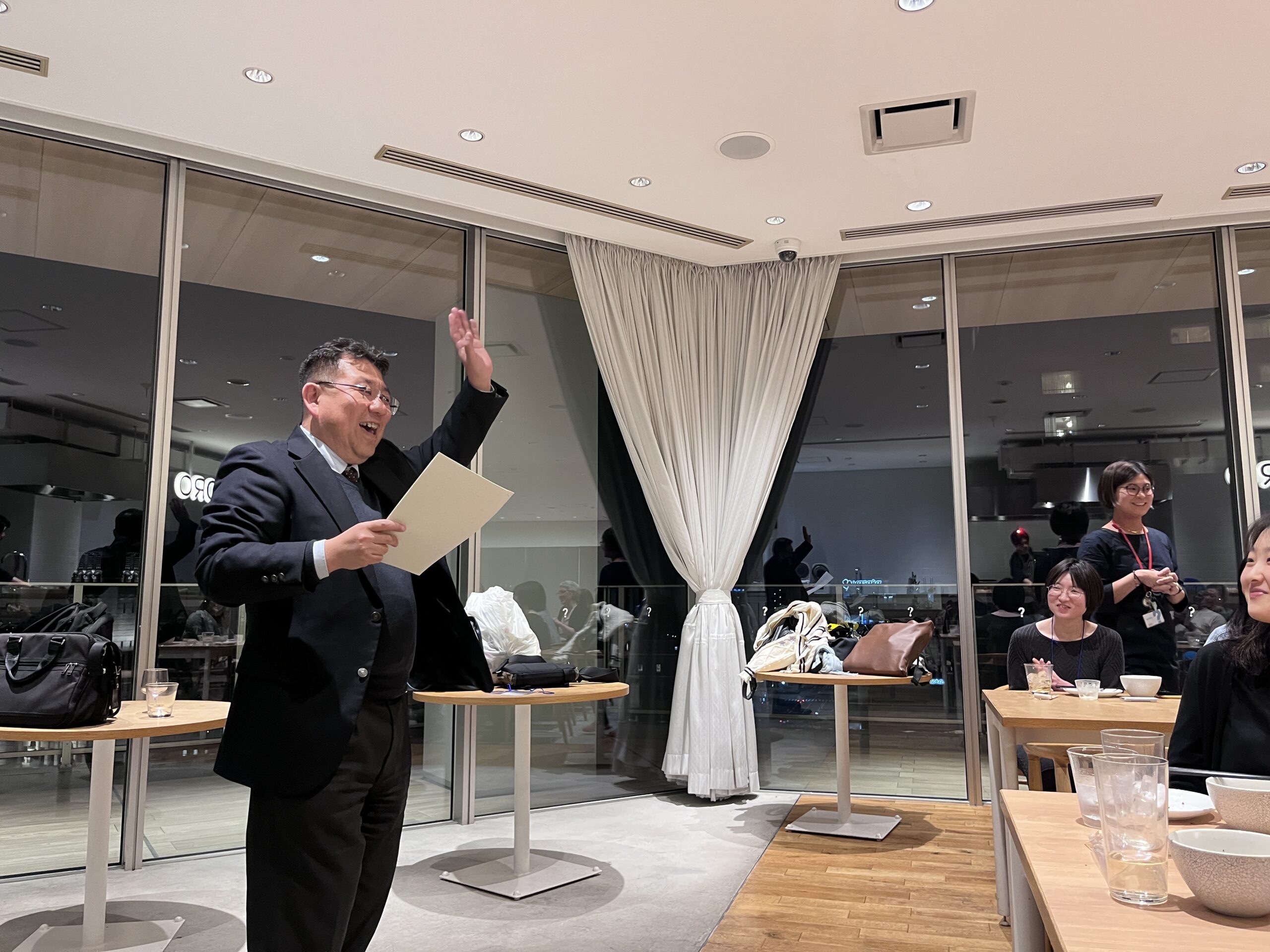
Thank you to all the participants, Glocal Center Hila, KIEC Sesto, and everyone who supported this program. I am glad that we were able to hold a debriefing session and a networking event in this way.
Kyoto is very famous as a tourist destination. In terms of industry, Kyoto is also an economically important city, with several global companies representing Japan. In order to further develop Kyoto’s industry and expand it more globally, I feel that the significance of the existence of foreign entrepreneurs is solid. This program was an opportunity for foreign entrepreneurs to learn about entrepreneurship in Kyoto, and for us as the government, to learn how to support foreigners to start a business in Kyoto.
I would like to conclude my remarks by commemorating your future success. Let’s continue to challenge each other in the future!
After receiving the final remarks from Mr. Andachi, the finale was full of smiles from the participants with the “three-pronged tightening,” which is the culture of Japan by Mr. Andachi, which was also held at the end of the program kick-off event.👏
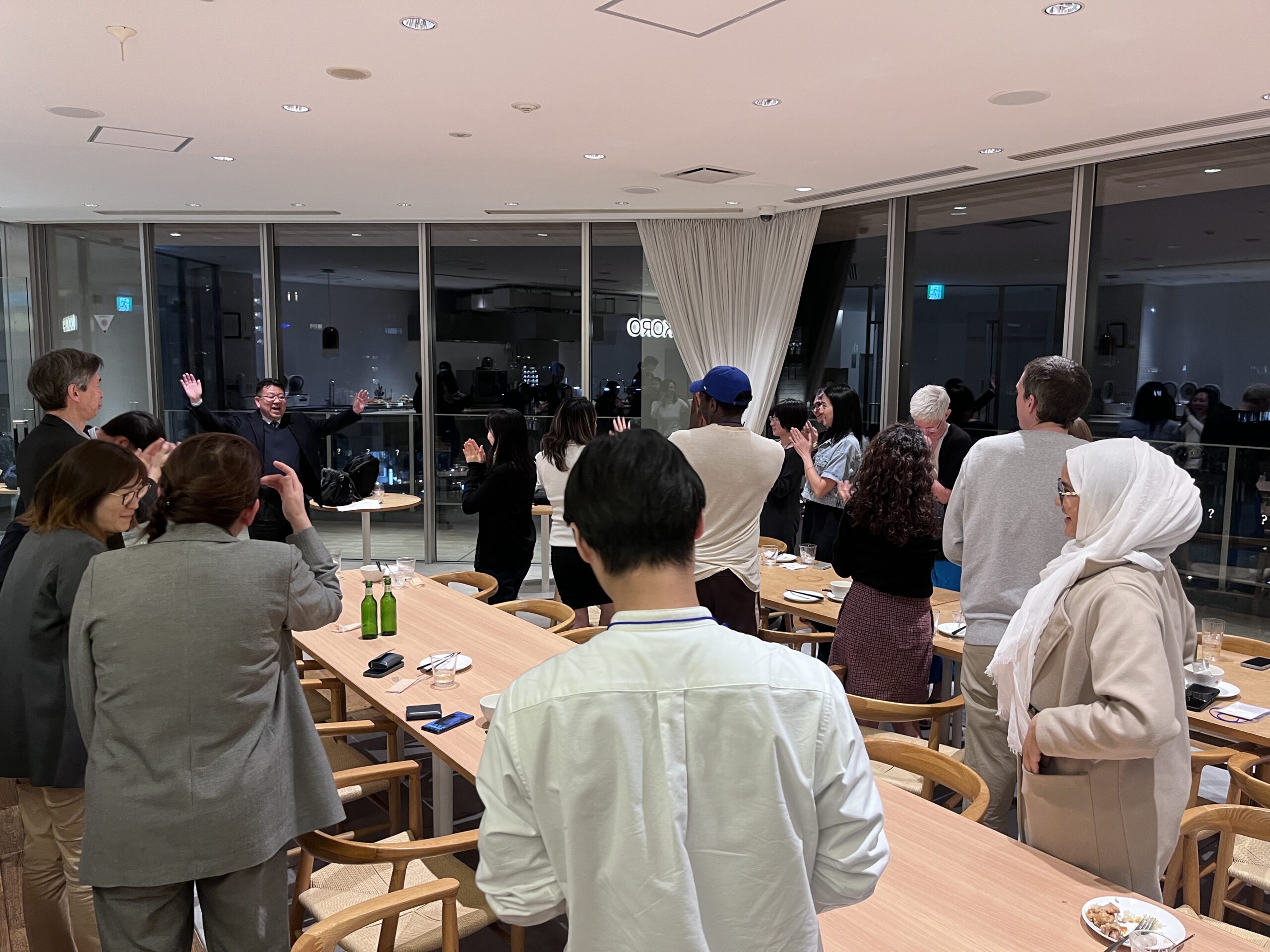
This year’s program will come to an end, but the efforts of the program participants will continue in the future. Please look forward to the future activities of the participants!👀
Author: Glocal Center Intern Ayaka Mizokawa



